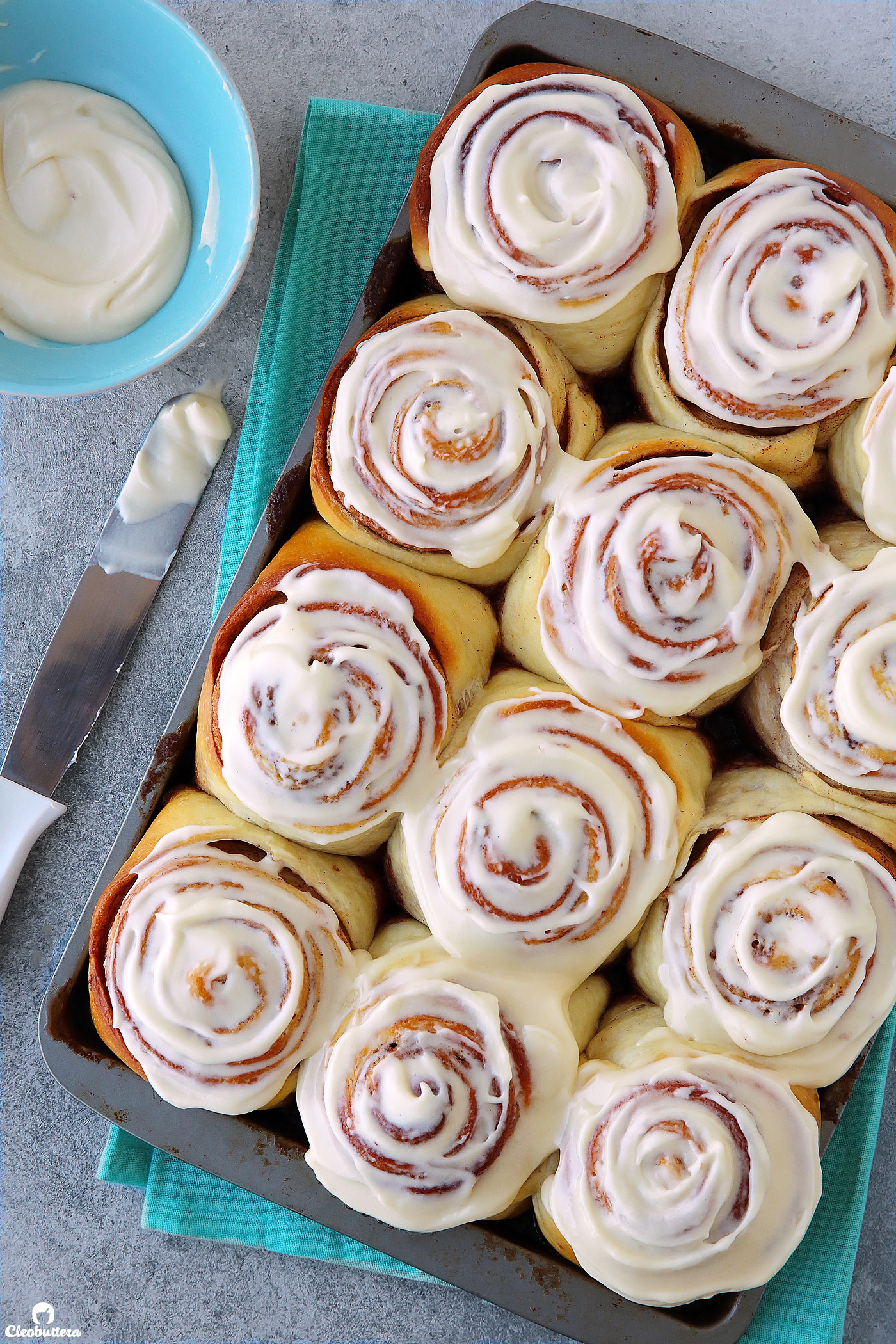The Ultimate Cinnamon Rolls
An amazing recipe for squishy soft cinnamon rolls with a super fluffy and tender texture and a gooey filling that caramelizes in the bottom. A halo of perfectly sweet cream cheese frosting ties everything together. A brilliant Asian technique called Tangzhong, ensures moist, airy rolls that stay soft for days.
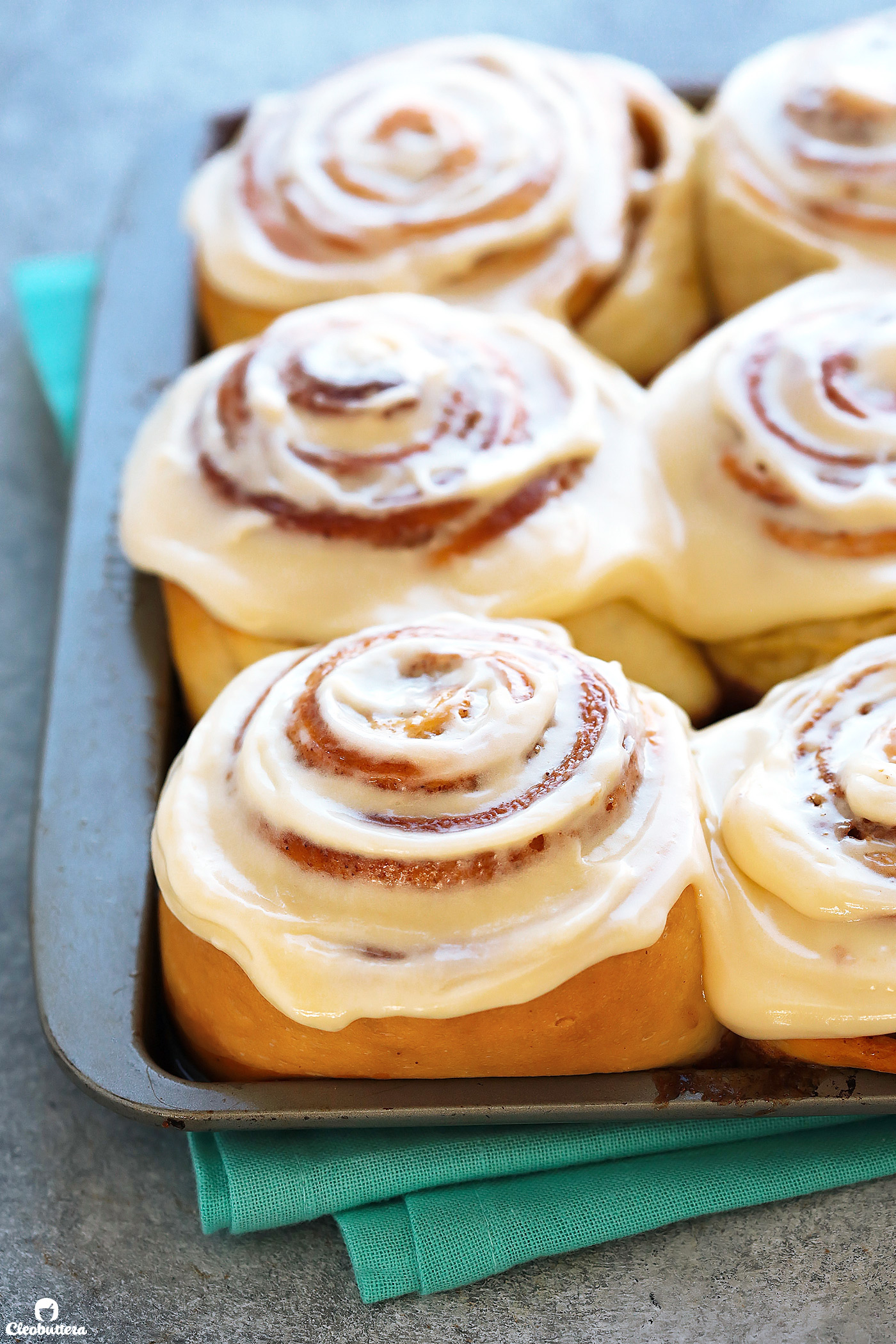
Very few things in life bring me a sense of accomplishment and relief than when I conquer a recipe that’s been giving me a hard time.
Accomplishment is understandable…but relief? Yes relief!
Things like not getting the texture right, nailing the flavor, or perfecting the height is what keeps me up all night. And when I do eventually drift off to sleep…it’s what I dream of. Anyone else’s dreams are centered around food?
Welcome to the obsessive compulsive baking life. Sometimes I feel like I need help ?
Red velvet cake has been haunting my dreams for years, yellow cake is taking over my brain cells, and until very recently, cinnamon rolls were all I could think of.
But that has finally changed when the best cinnamon rolls I’ve ever tasted emerged from my oven.
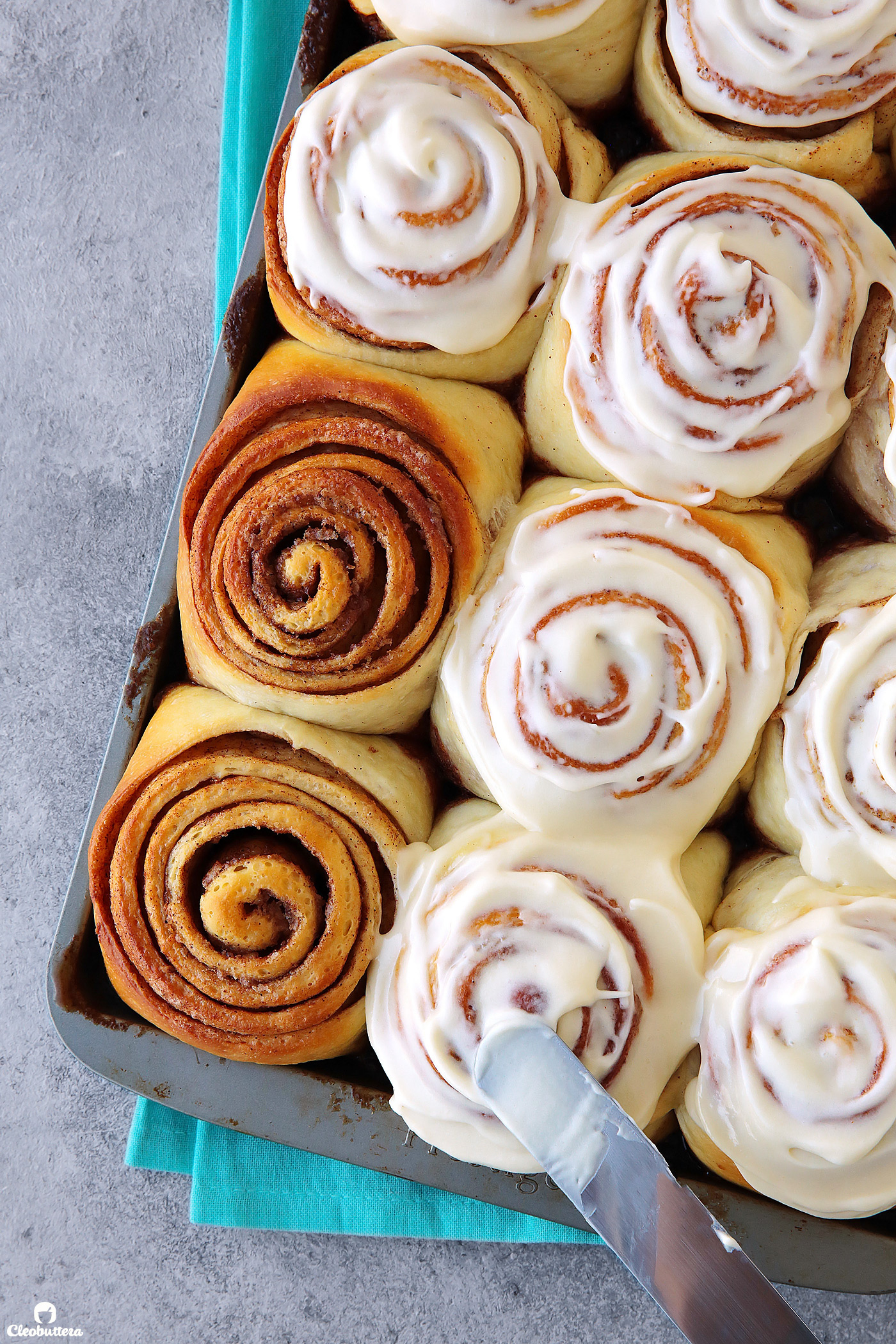
The first bite was not only followed by a HUGE sigh of relief, but with the dorkiest happy dance known to man, and an embarrassing amount of ooohs and aaaahs.
Oh my God, cinnamon rolls…you’ve taken me too long to perfect, but you are so worth the wait.
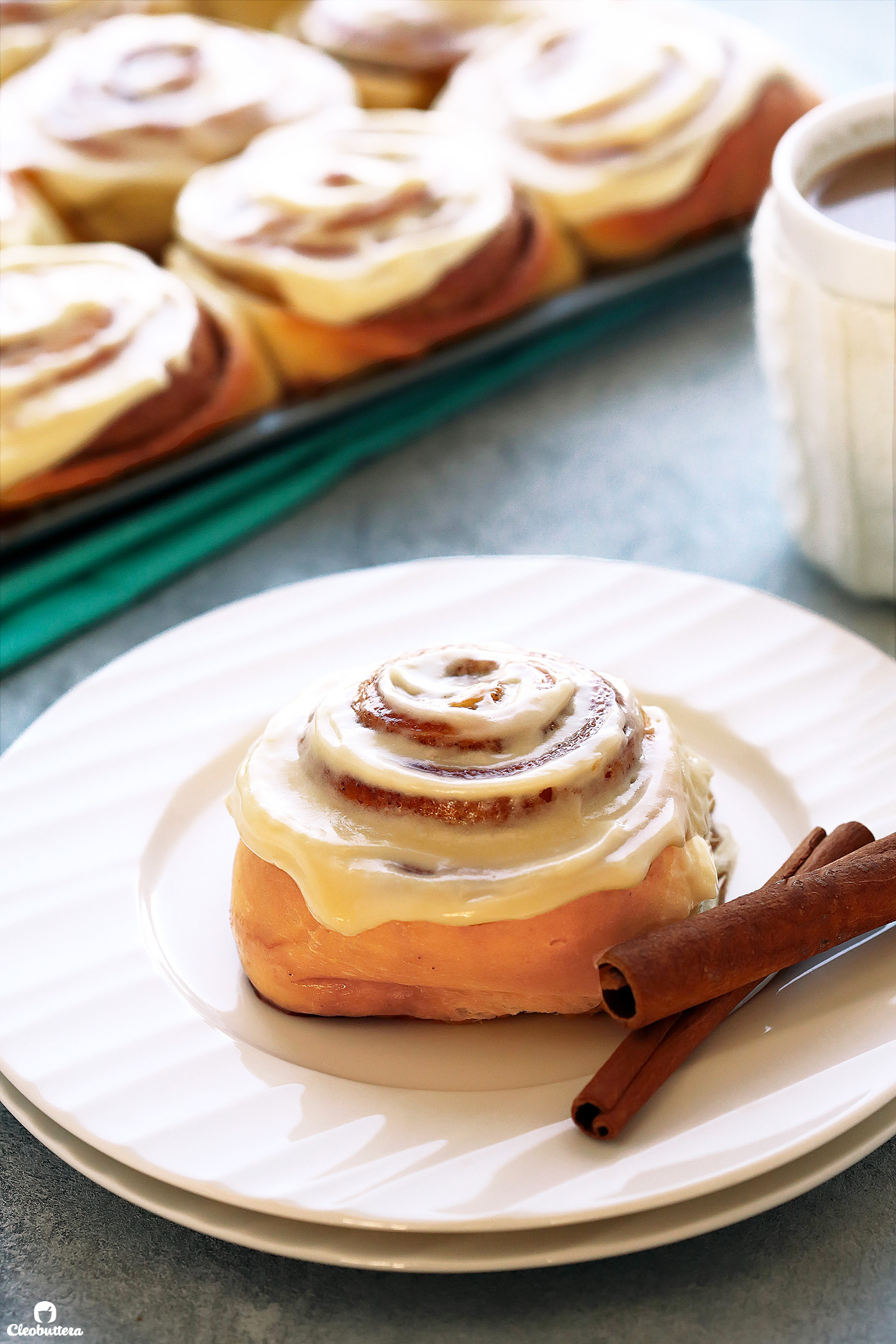
So why did it take me so long to find the ultimate cinnamon rolls?
My wishlist was long and I wanted it ALL! Getting most of it, just won’t do. They had to have it all…no compromises.
My idea of the perfect cinnamon rolls needed to be:
- Squishy soft, and stay that way even after they cool.
- Airy and fluffy in texture.
- Generous with a gooey filling.
- Forward with the cinnamon flavor.
- Slathered with a cream cheese frosting that compliments rather than steals the show.
- Not overly sweet.
- Not too rich.
- Big and beautiful.
- Bonus: Have a caramelized bottom, that leaves a mess behind.
Is that too much to ask?
Apparently yes, but I cannot be more happy to say at last that these cinnamon rolls, check every attribute on the list.

Even that bonus caramelized bottom.
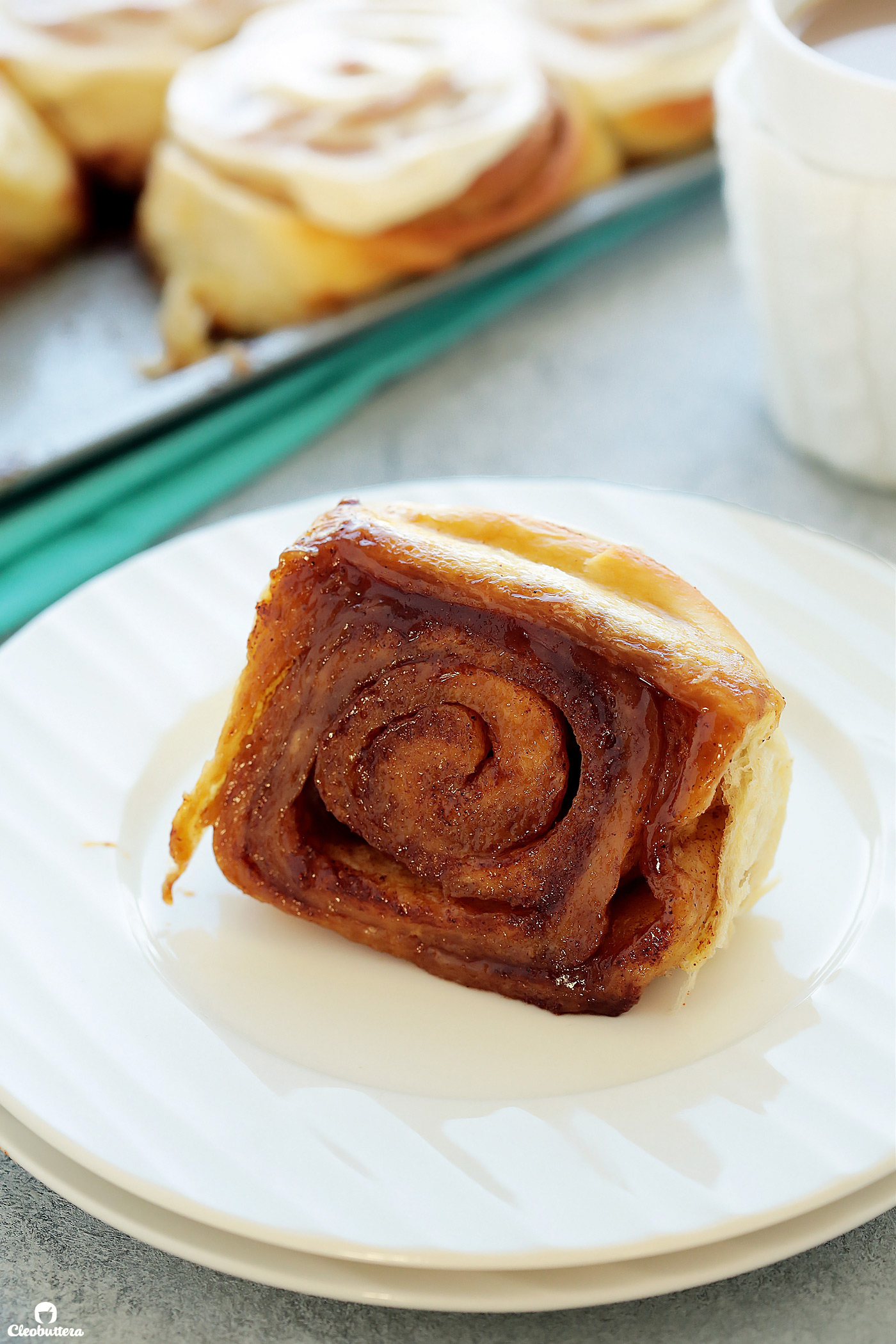
And that I can now sleep comfortably knowing that I have a killer homemade cinnamon rolls recipe with gold standards under my belt.
Something I can pass on to my kids, grace special brunches with, and welcome guests to. Because is there anything more inviting than the smell of cinnamon rolls wafting from the oven?
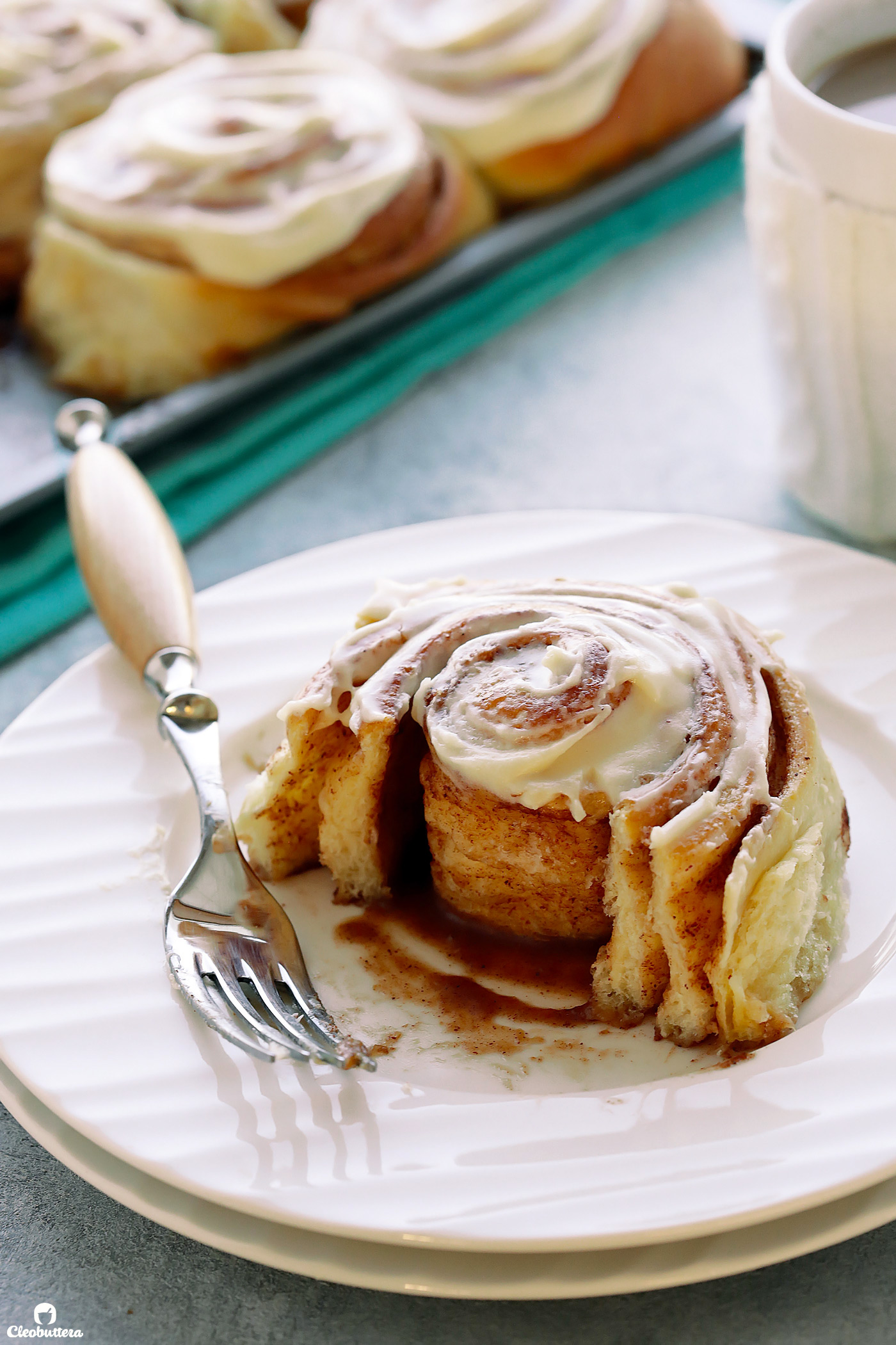
There are so many great cinnamon roll recipes out there, in fact, I’m not sure if a bad one actually exists.
What makes this one my absolute favorite is it’s impossibly plush and fluffy texture that stays soft for days. Literally.
As in you can eat them 2 days later…and they’ll still be oven-fresh soft.
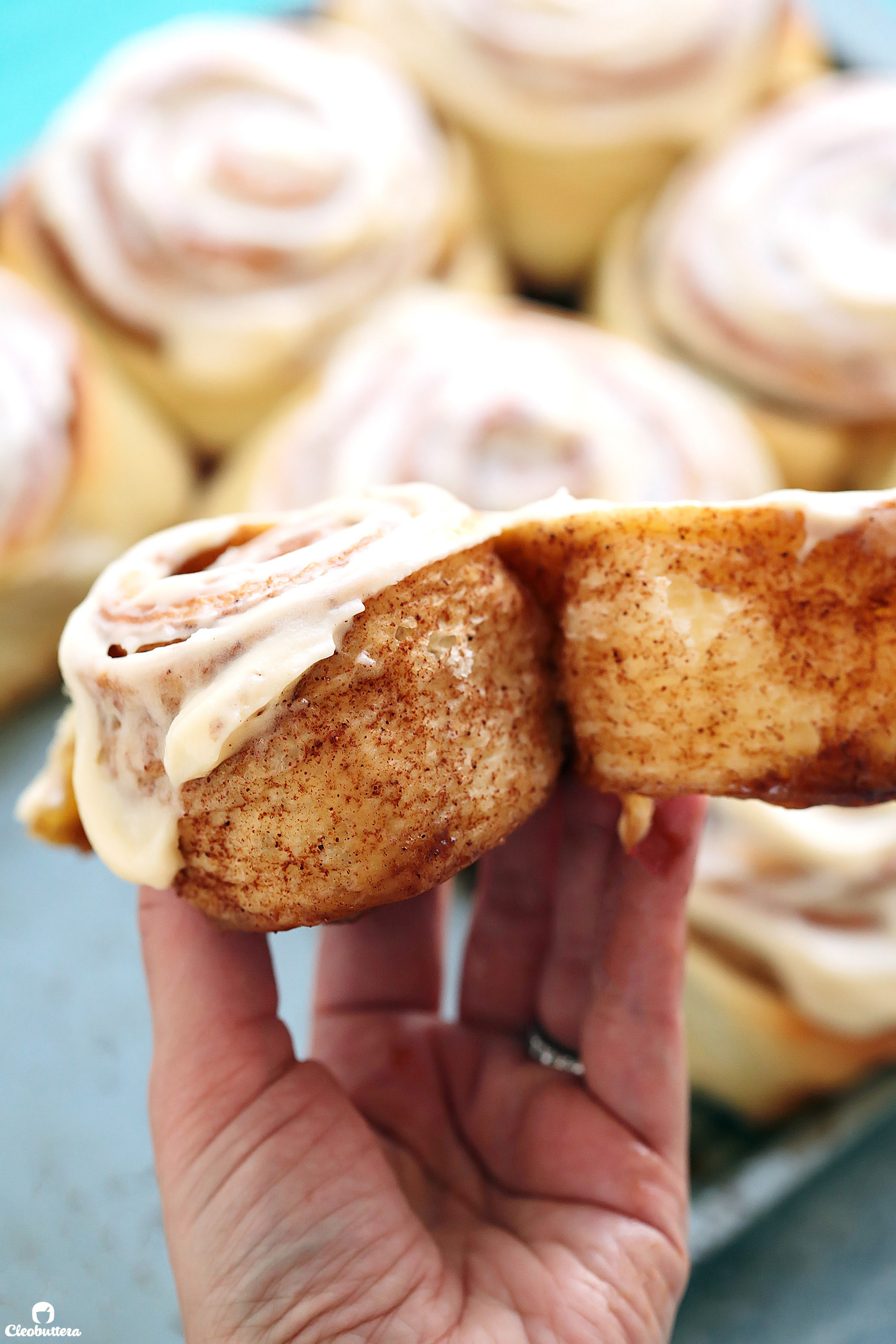
They have a featherlight airiness that makes them melt-in-the-mouth, without being too rich.
I mean would you look at that open crumb of this fluff ball..
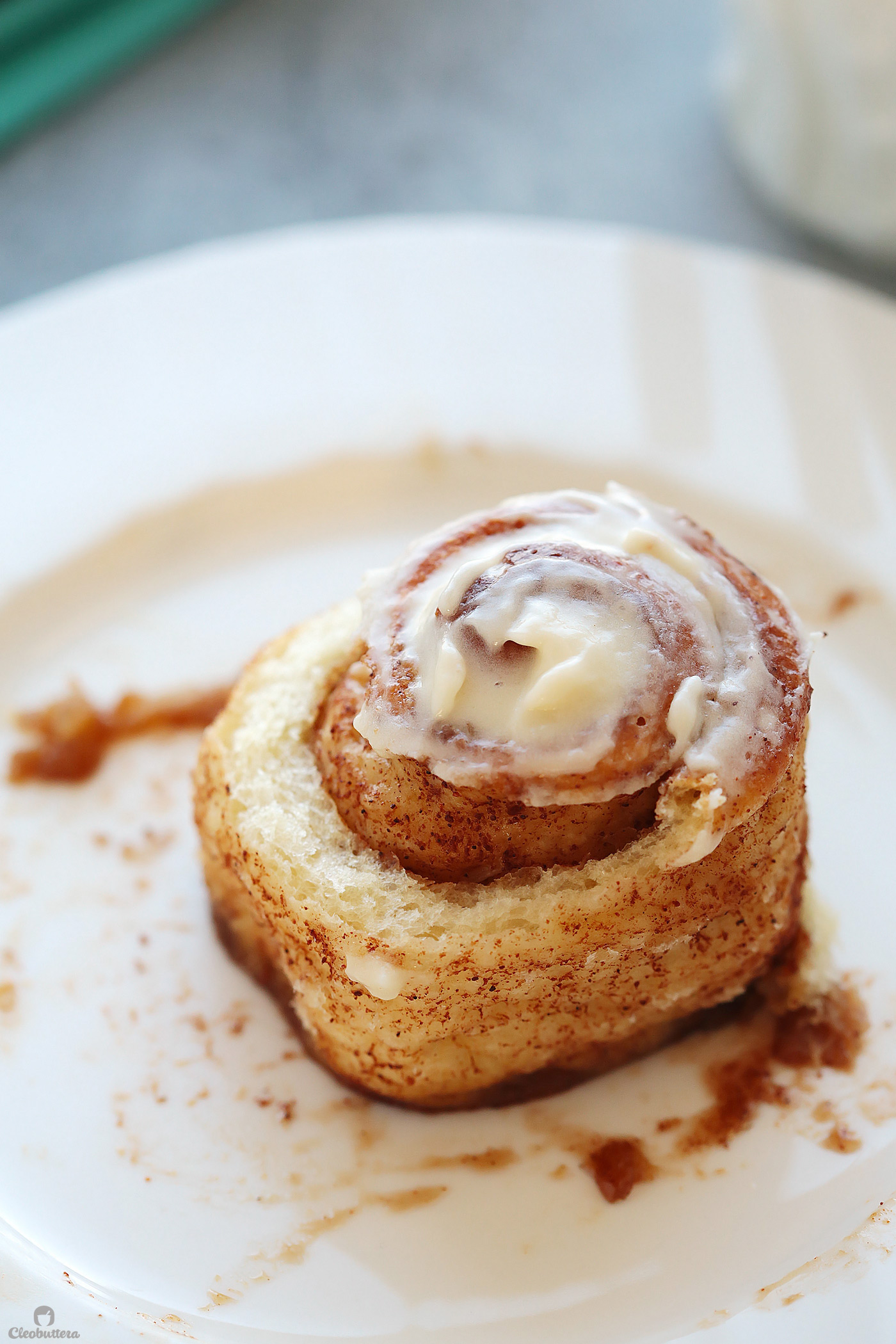
Their cotton-like, pillowy texture just sets them apart, and makes you want to go for more.
I realize that that’s more of a problem than a hallmark, but really…they feel lighter on the stomach (not calories… I wish!) than most cinnamon rolls, say a brioche-based dough for instance, which makes it easy to go for seconds. But that could be just me ?
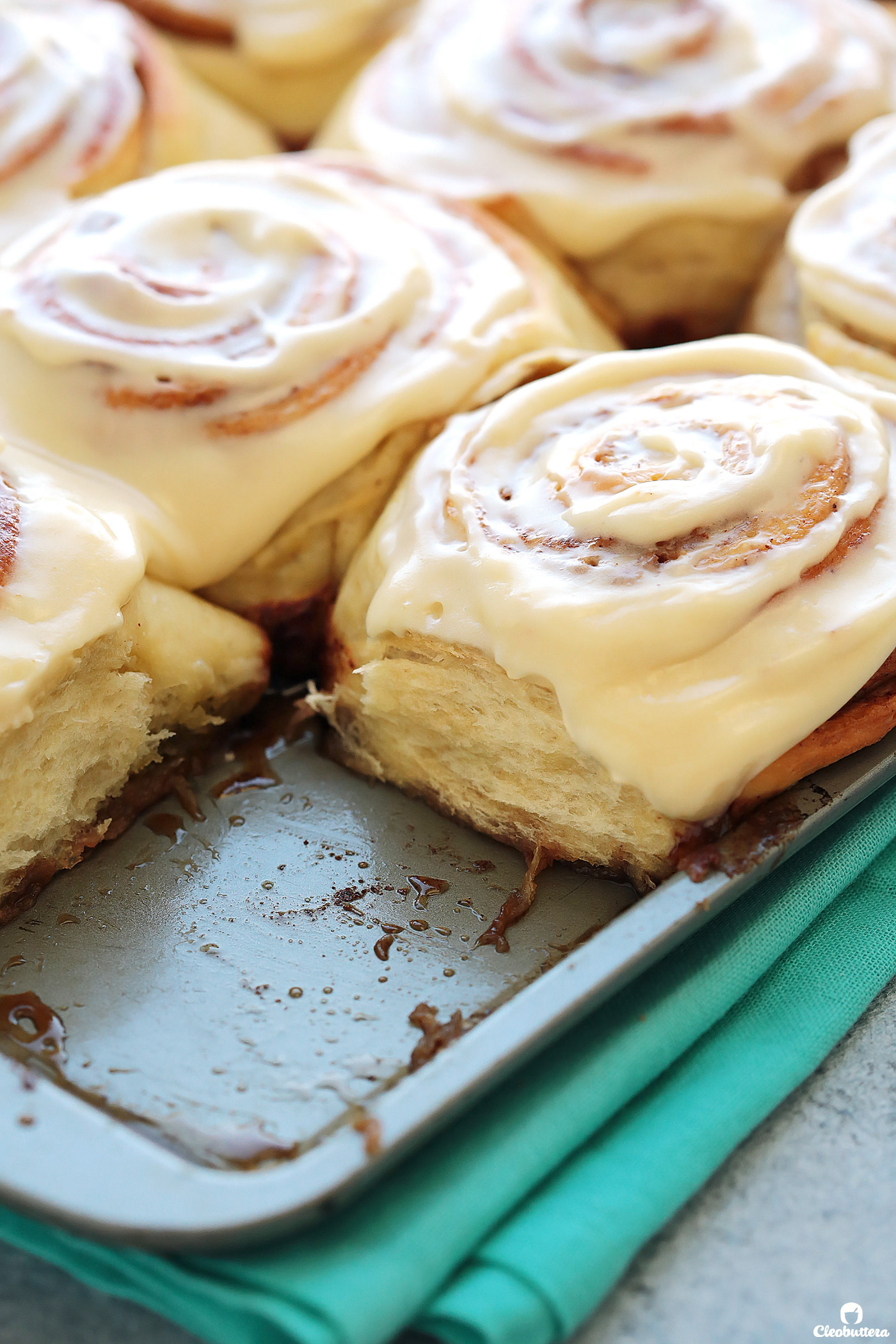
The texture of the dough owes its exceptional softness to a popular Asian bread making method called Tangzhong.
In fact, the dough is based on a Tangzhong bread recipe, that I posted years ago under the title Ultra Fluffy Milk Bread Rolls. It is by far, one of the most popular recipes on the blog and for a good reason. Readers cannot get over that extreme fluffiness of the bread and could not stop raving about it in the comments.
So much so that I’ve been asked many times, if the dough’s recipe can be adapted for cinnamon rolls. Having now tried it myself, I can now confidently answer with a BIG, FAT:
YES!
The first time I tested the aforementioned dough for cinnamon rolls, it had a great texture, but the overall taste was overly sweet, and it only made a batch of 8. Now in my humble opinion, if you’re gonna go through all that amount of work, then you might as well get more out of it…12 sounded like a more reasonable amount.
So as I set out to improvise, I discovered that King Arthur Flour had already done all the work. They omitted all the sugar from the dough, and extended the amount of ingredients to yield a batch of 24 smaller rolls.
So I tried their recipe for Soft Cinnamon Rolls, but since ‘BIG & Beautiful’ was a must on my list of cinnamon roll goals, I decided to go for 12 bigger ones instead. Bigger means more fluffy innards and gooey centers and I wasn’t about to give up on that. I also used a different filling and frosting, but more on that later.

The textural results were impressive but I wasn’t a fan of the lack of sugar in the dough. Even with the added sugary filling and frosting, the dough tasted too bread-like and salty. So after playing with different amounts of sugar, I landed on just the right amount that yields perfectly sweet buns.
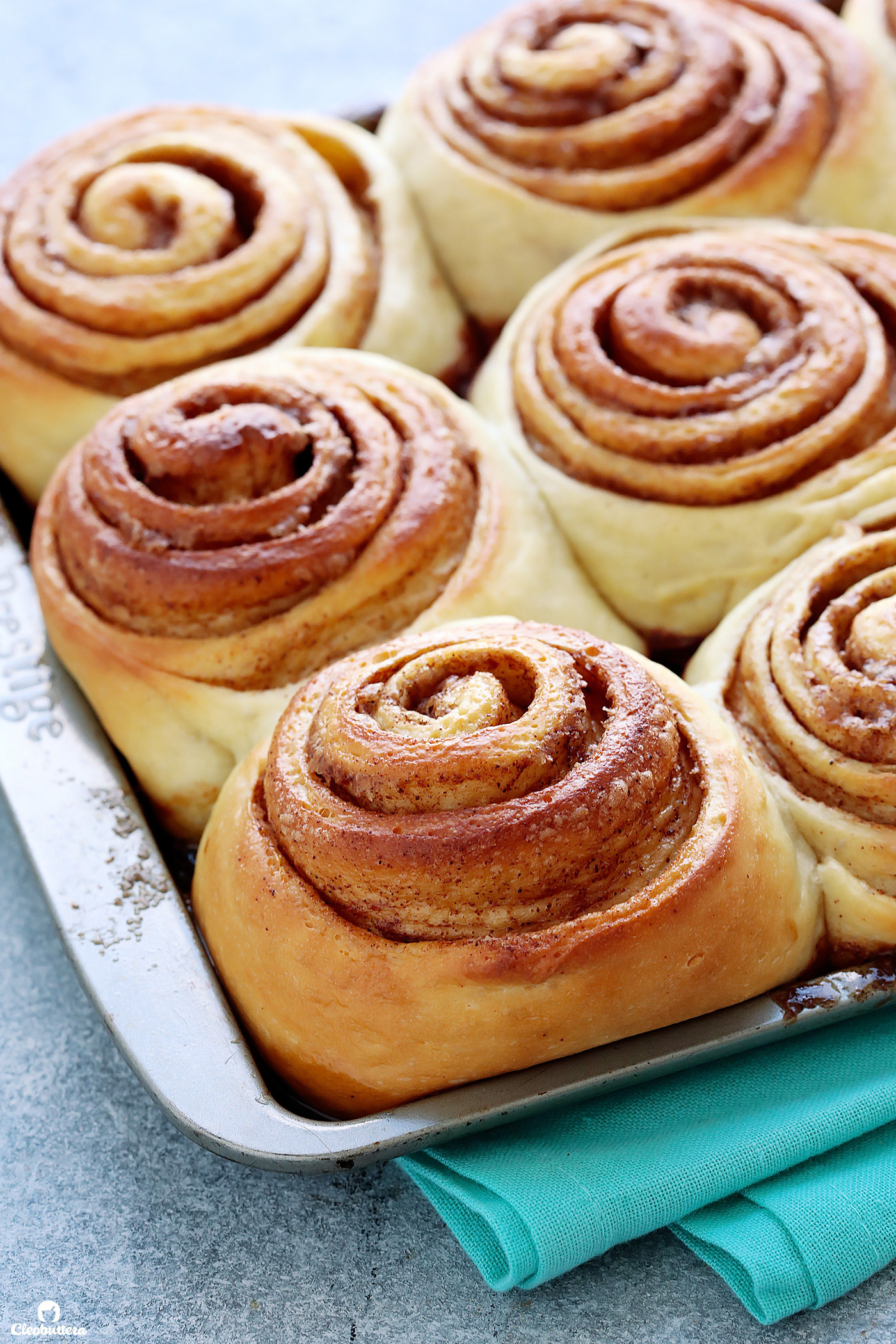
So back to that magical dough and the secret to its fluffiness.
What exactly is Tangzhong?
Tangzhong is an Asian bread-making technique that produces soft, light-textured, and tender breads and rolls. I promise it is much simpler than it sounds! It only involves cooking 5-10% of the flour in the recipe, with some of the recipe’s liquid, into a thick, pudding-like paste. This paste is then added to the remaining recipe ingredients and kneaded into the dough.
The paste traps water, which makes it possible to add much more liquid than what the flour can normally hold. The extra liquid keeps the crumb moist and tender without turning soggy. It also converts to steam during baking, which makes the bread fluffy and light.
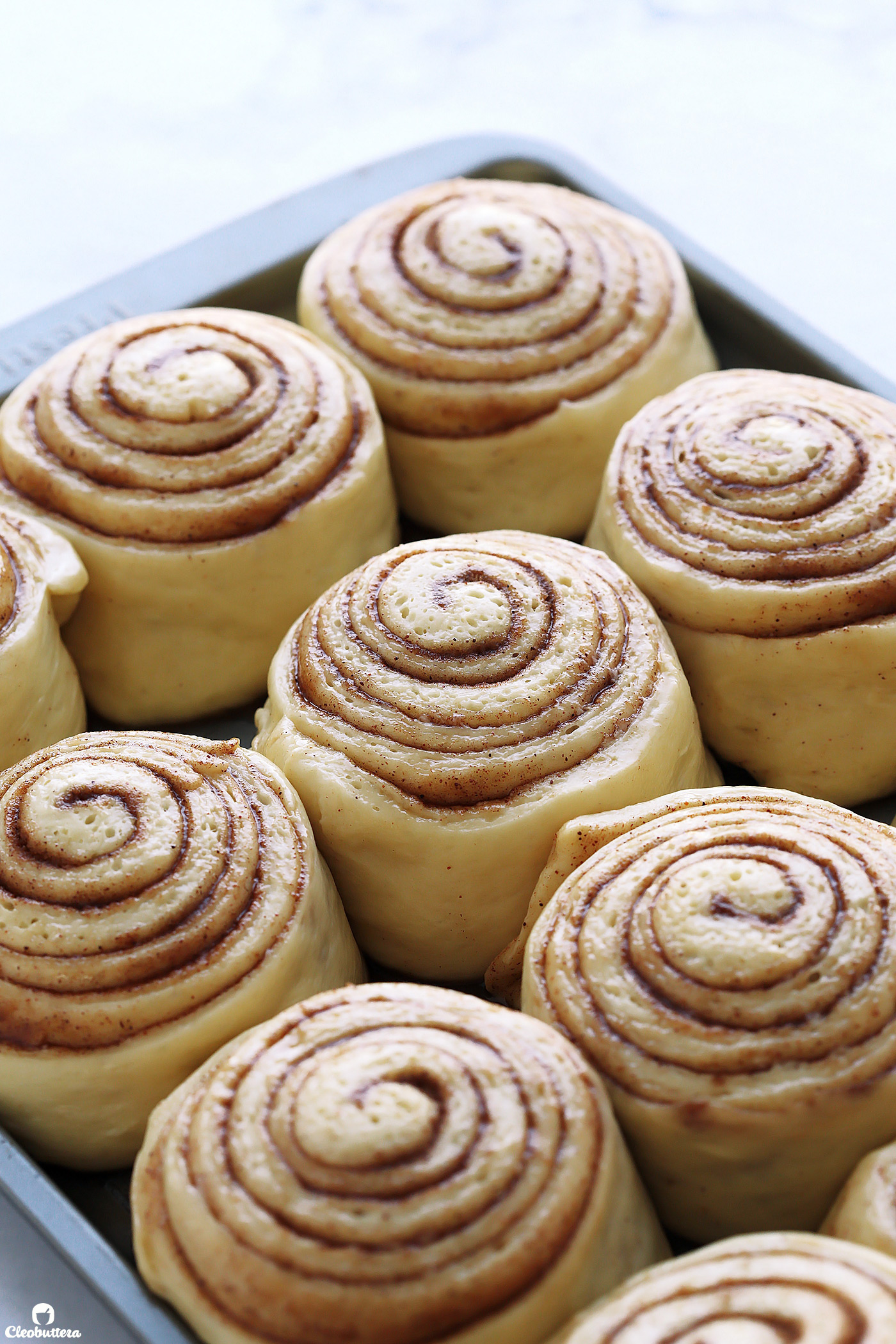
A perfect dough is the heart and soul of cinnamon rolls, but that doesn’t make the remaining components any less important. And here’s where I departured from King Arthur Flour’s recipe.
For a gooey filling that caramelized in the bottom and smeared your lips with deliciousness:
- Butter (a lot of it) proved to be a must. Not only does it create a gooier filler, but it also hydrates the dough, making it even more soft and tender.
- All brown sugar made for a filling that is gooier than a combination of brown and white, and adheres better to the dough.
- A generous amount of cinnamon for perfectly spiced rolls.
- A little bit of salt, balanced out the sweetness.
- I also took a hint from Lauren’s Latest and Oh Sweet Basil who both use cornstrach in the filling. I was weirded by it too…but it works as an emulsifier and really helps thicken the consistency of the filling, making it even gooier. Don’t worry…you’re not gonna taste it.
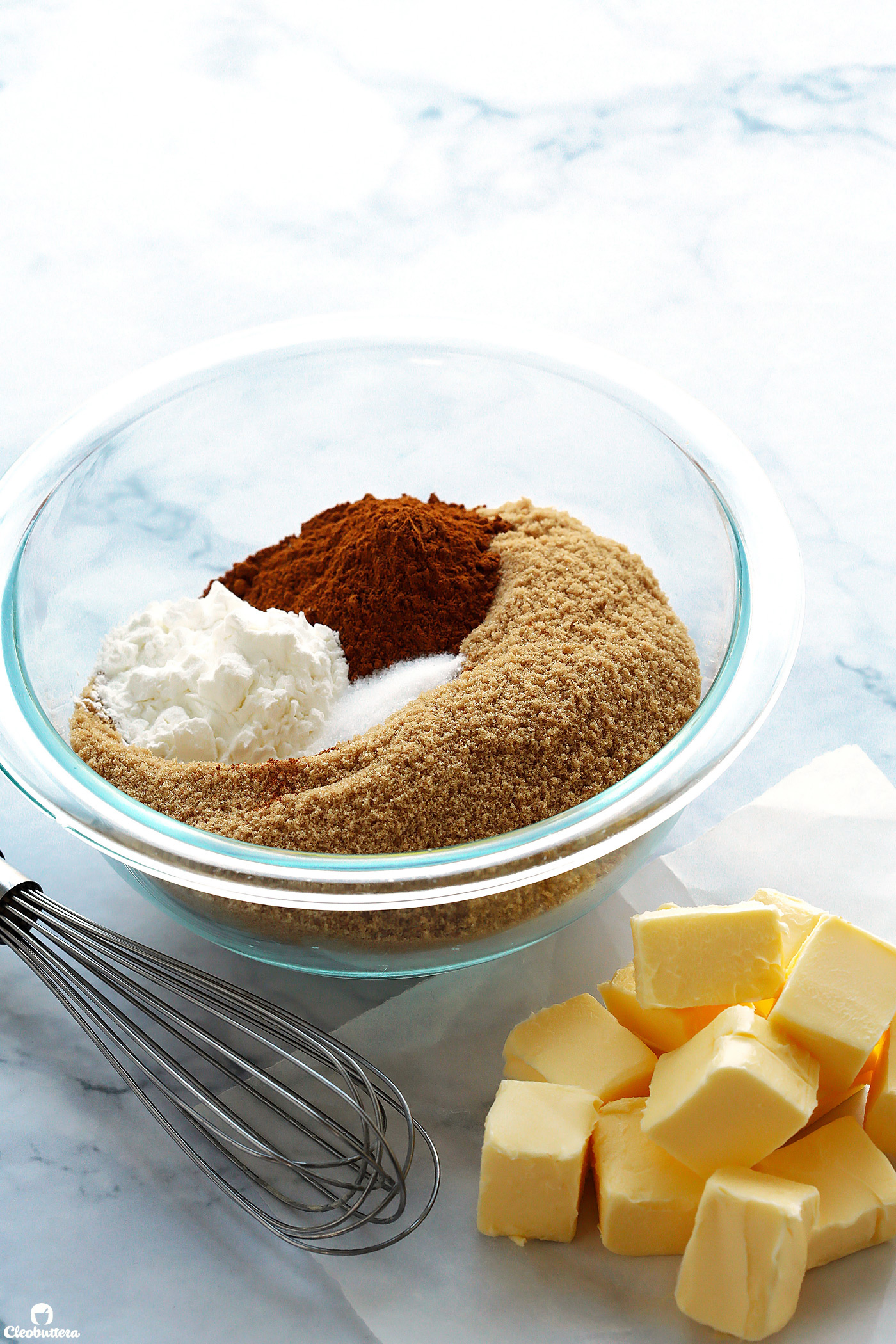
As for the last component, the crowning jewel of the rolls; the cream cheese frosting, here’s what I discovered.
The perfect cream cheese frosting for cinnamon rolls:
- Equal parts of cream cheese to butter made for a perfect ratio of creaminess to tanginess, without overwhelming the flavor of the the rolls themselves.
- Less powdered sugar than most recipes, keeps the sweetness at bay.
- A pinch of salt oversets the sweetness.
- A squeeze of lemon juice adds another dimension of tanginess without tasting like lemon.
- Vanilla adds a subtle floral flavor.
- A splash of milk softens the frosting, to make it easier to spread and melt into the cervices of the rolls.

Now that I’ve talked your ears off…
Let’s make some rolls!
Eventhough I tweaked a couple of steps from the original Milk Bread Rolls recipe, the basic idea is still the same. So it might be a good idea to hop over to the post and watch the VIDEO!
But worry not my friends, an additional avalanche of step-by-step photos in true Cleobuttera fashion, still awaits you below.
Let’s start with the Tangzhong paste!
Here we have some of the flour, water and milk cooked until a thick paste form. It only takes a couple of minutes on the stove, and the results are well worth the extra step.

To the Tangzhong, we’ll add melted butter…
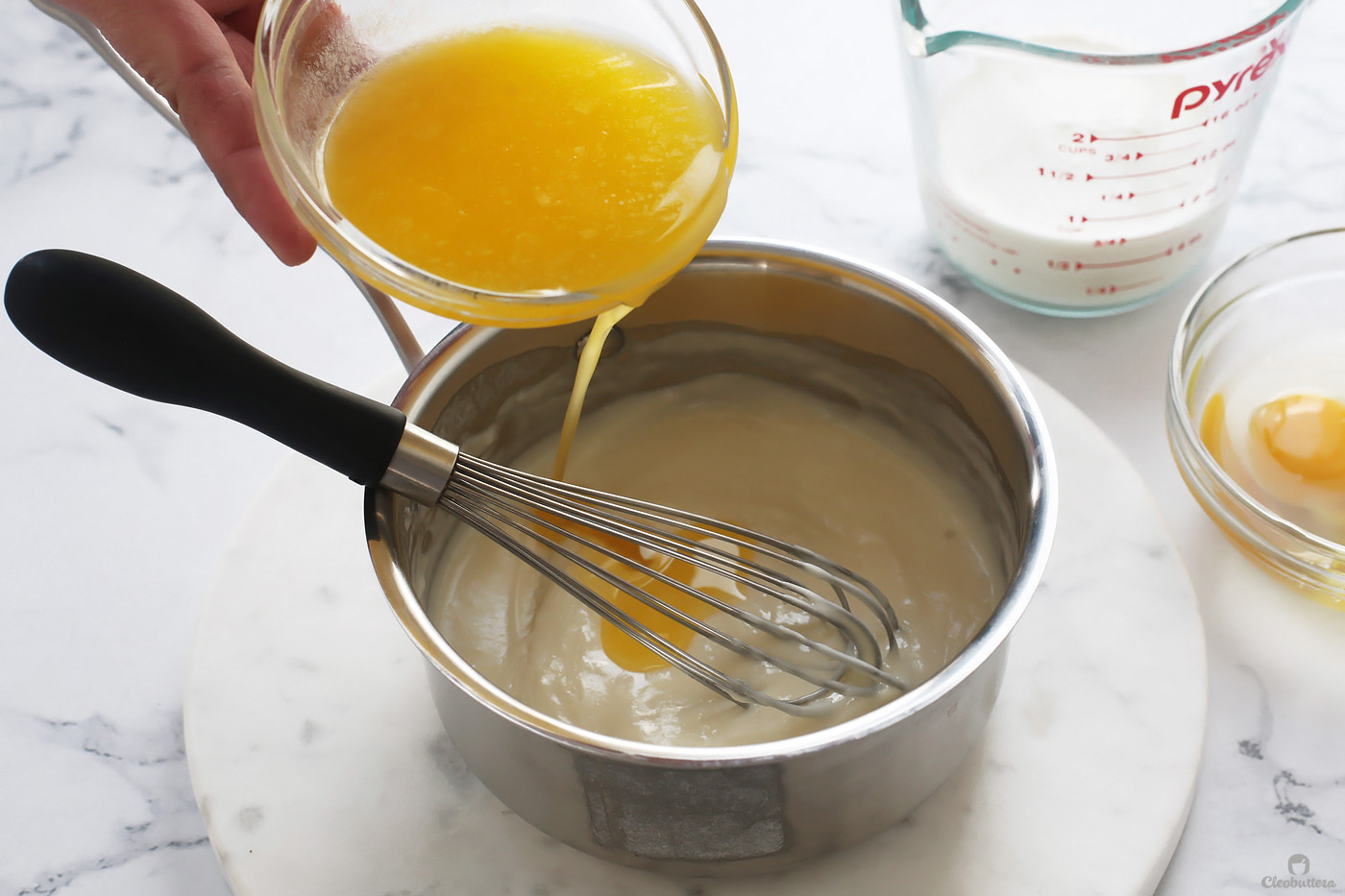
Milk straight from the fridge or cool room temp, to cool it off…
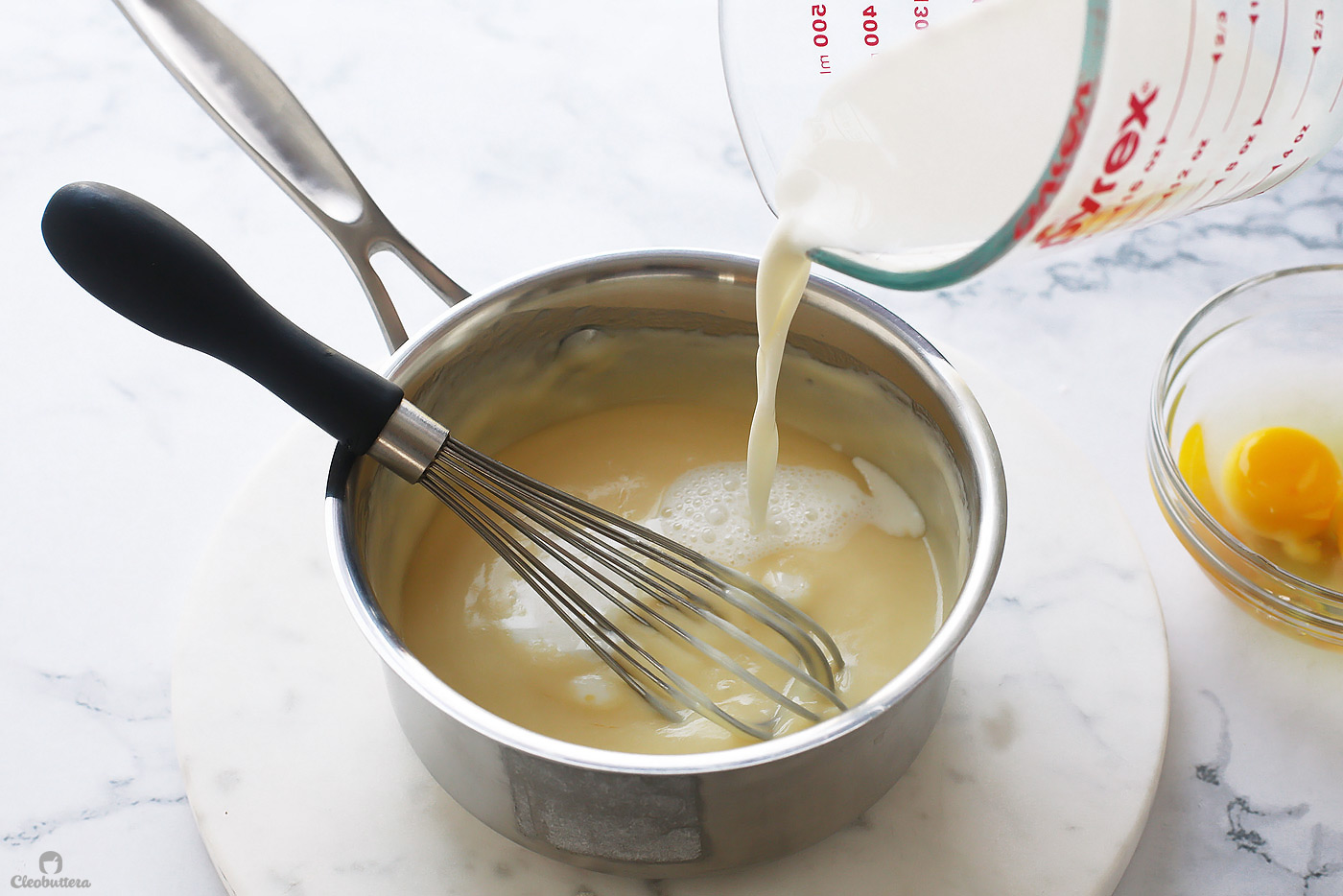
And we’ll then whisk in the eggs last, to avoid scrambling it. The mixture should now be nice and warm and safe to pour over yeast.
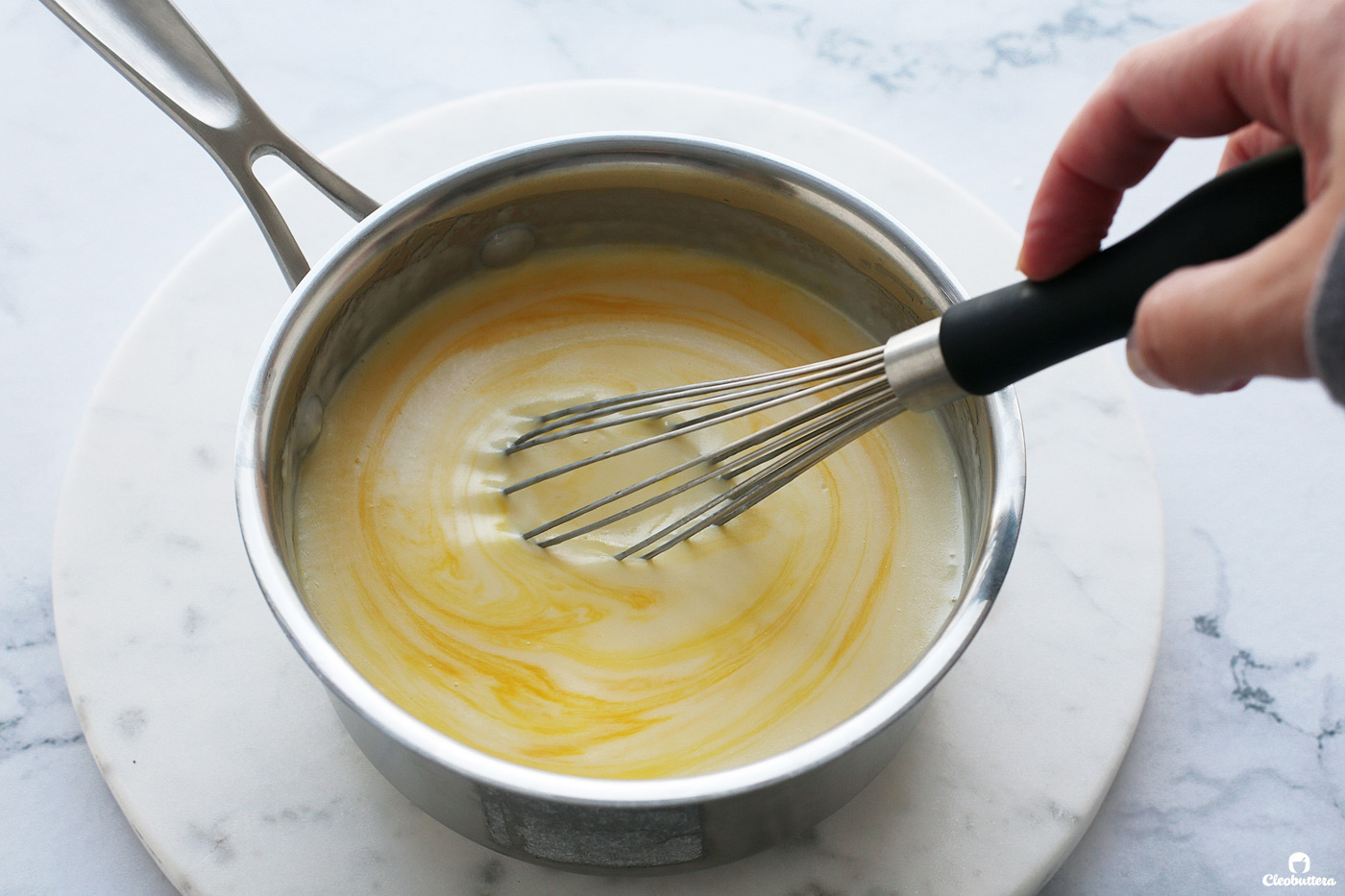
For our dry ingredients, we have:
Flour, dry milk powder and instant yeast. Be sure to use INSTANT!
Dry milk powder adds flavor and increases the dough’s tenderness.

Then we’ll pour in our tangzhong/milk mixture.
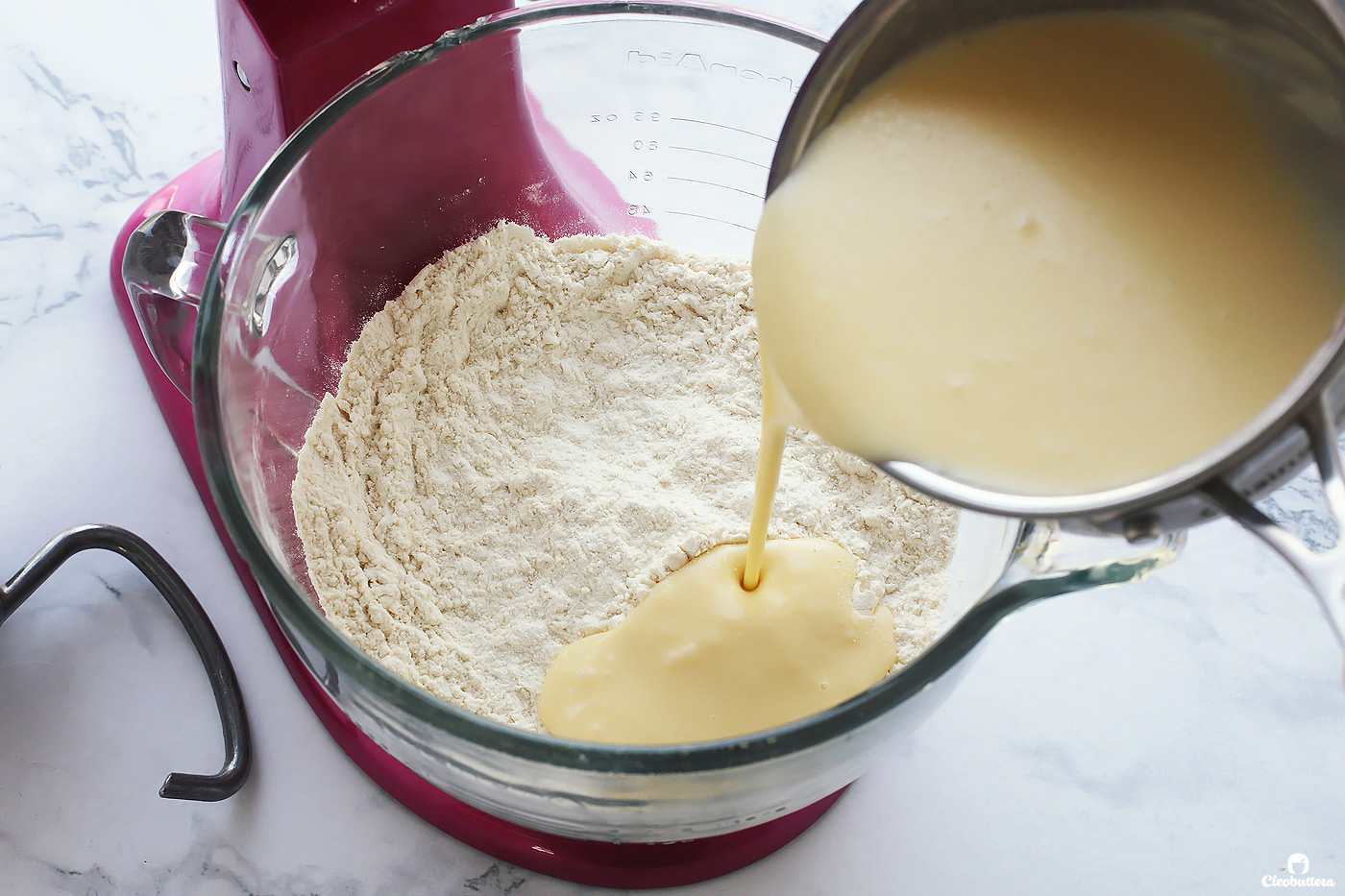
And knead just enough until the flour is moistened and a shaggy dough comes together; 1 to 2 minutes.

We’ll then cover the dough, and let it rest for 20 minutes.
This will give the flour a chance to absorb the liquid, making it easier and faster to knead later.
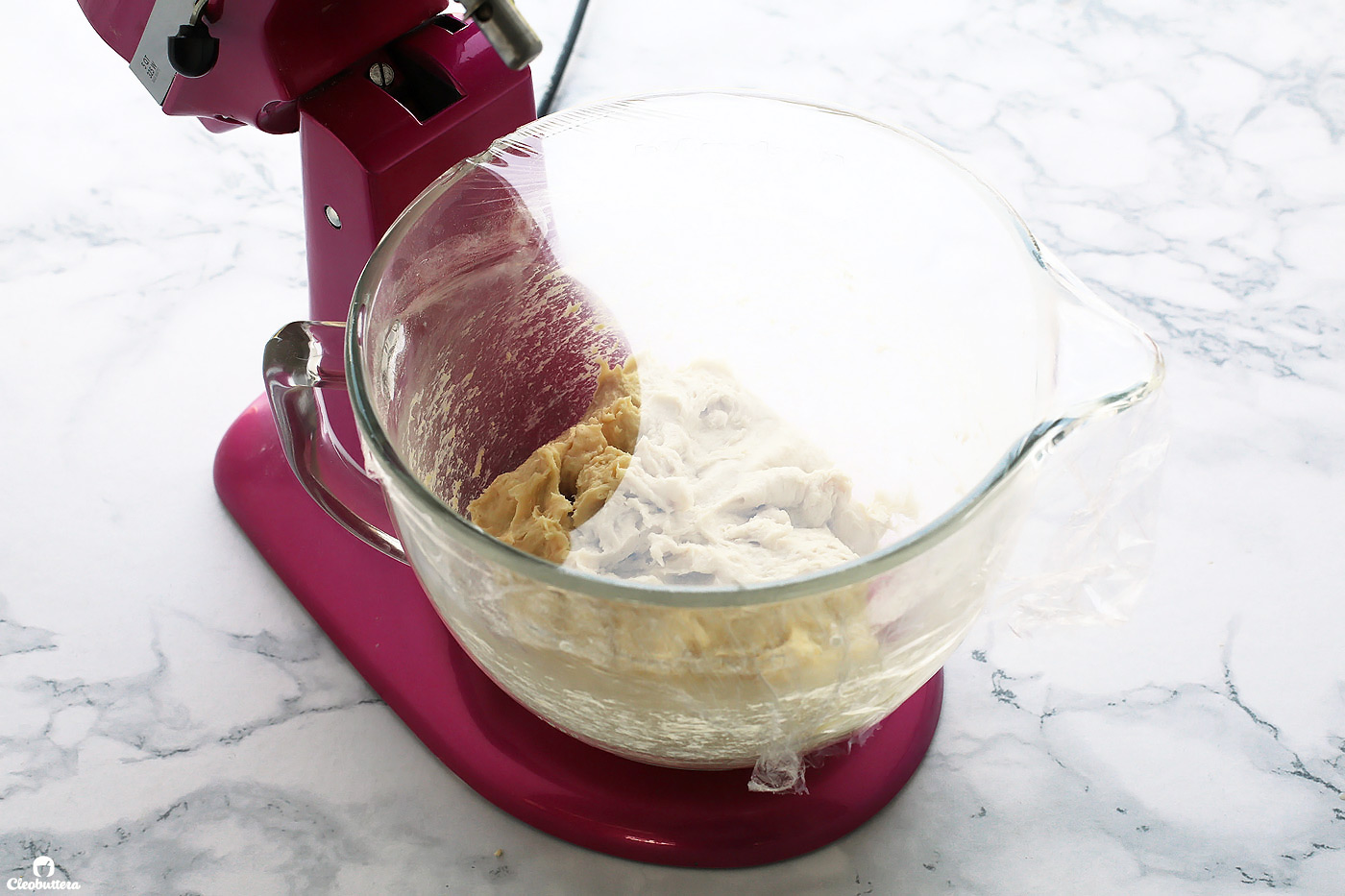
After the 20 minute rest, add the sugar and salt.
The reason why we hold off the sugar and salt for later, is because they’re both hygroscopic, which means they attract water and would have pushed moisture away from the flour, delaying the formation of gluten. So we add them well after the water has been absorbed by the flour to give the dough a chance to build enough structure.

We’ll then mix the dough until a smooth, elastic and slightly sticky dough forms; about 10 minutes. The dough will be very sticky when mixing begins, but resist the urge to add more flour (especially if you’ve used weight measurements); the dough will absorb the excess moisture and come together nicely as the mixing progresses.
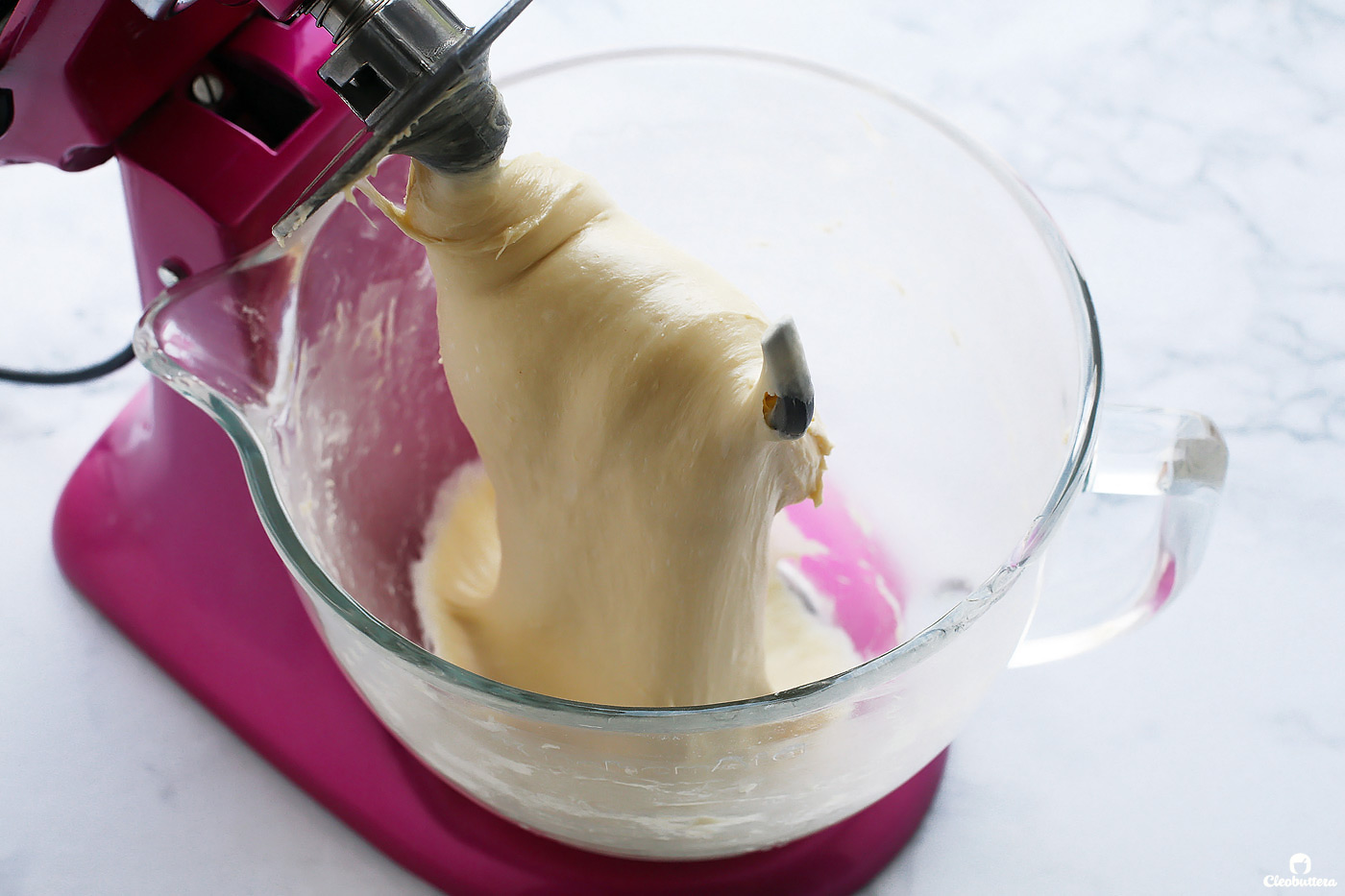
After the 10 minutes of kneading, the dough should feel slightly sticky but not messy and should easily come together in a taut ball when handled with lightly oiled hands.

We’ll then cover it and leave it to rise in a warm place until doubled in size; about an hour. Or you can let it rise in the fridge overnight.
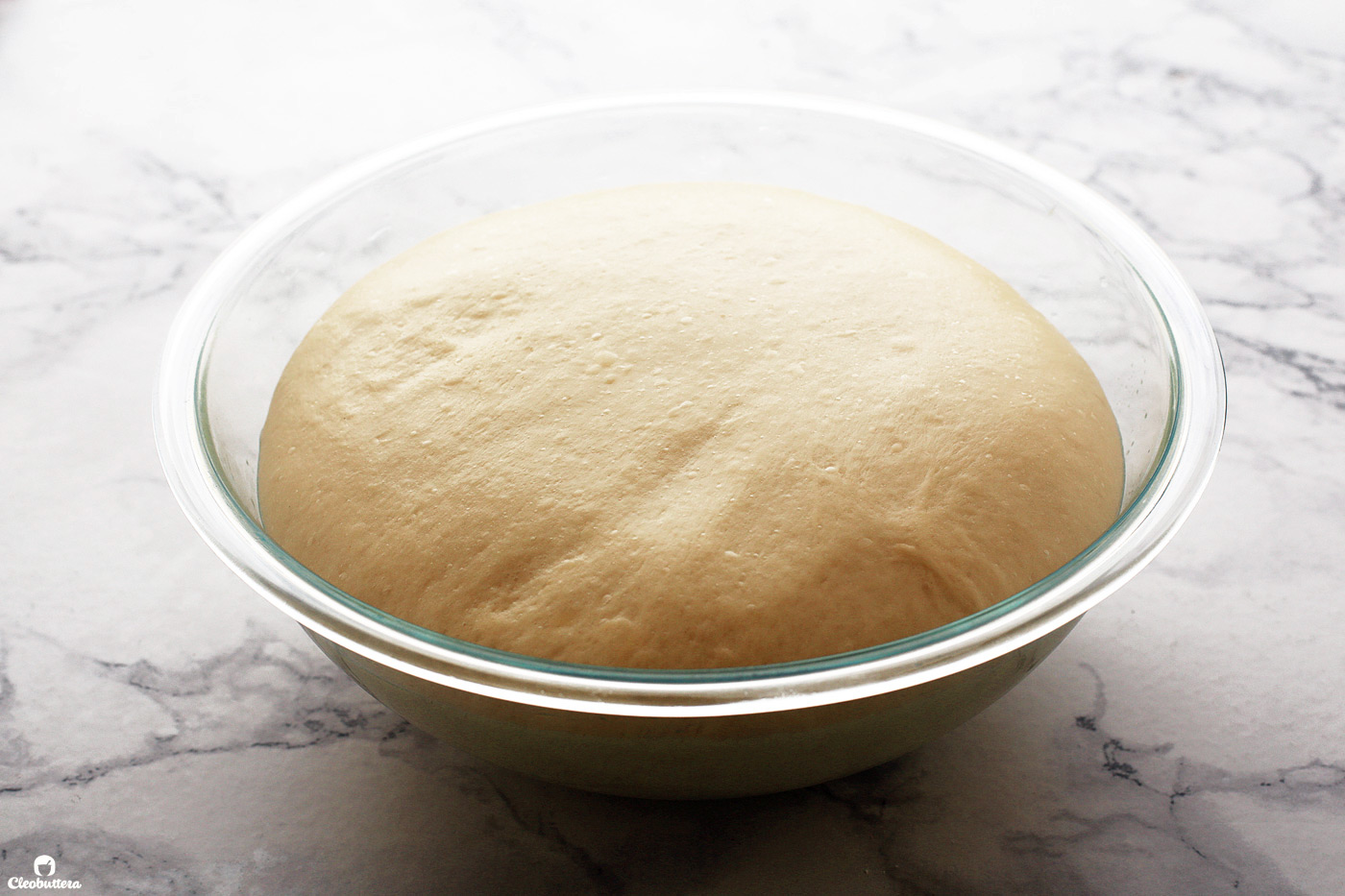
Pat, stretch and roll out the dough to form 16X18-inch rectangle with long edge nearest you.

Then spread partially melted butter all over the surface.
Partially melted butter is much easier to spread than room temperature butter (which can tear the dough), without the mess of melted butter.
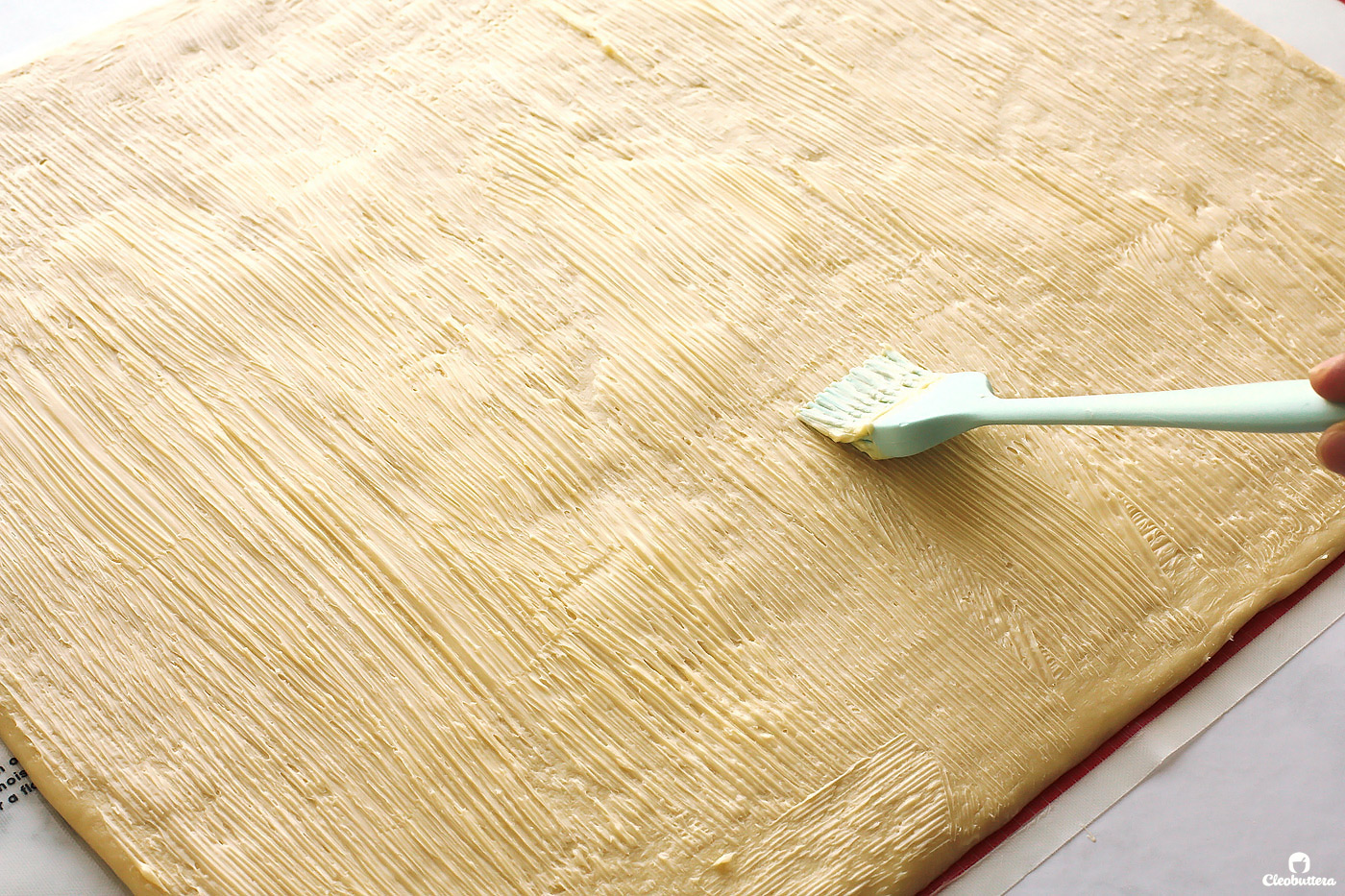
Then sprinkle on the filling mixture and press to adhere. I like using a rolling pin to press it on there.

Starting with long edge nearest you, roll the dough into a cylinder. Pinch the seam to seal the dough shut and roll cylinder seam side down.

Mark gently with a knife to create 12 equal portions. For the cleanest cut, slice by holding a strand of dental floss underneath the cylinder, and cross ends of the floss over each other and pull. Slice cylinder into 12 portions (about 2 inches each).

Transfer to a 15X13-inch rimmed baking sheet (pictured below) or 13X9-inch baking pan, that’s been greased with cooking spray.

Cover the pan loosely with plastic wrap and allow the rolls to rise until puffy and the rolls are touching one another; 40 to 50 minutes.

Then bake these babies until golden and gorgeous!
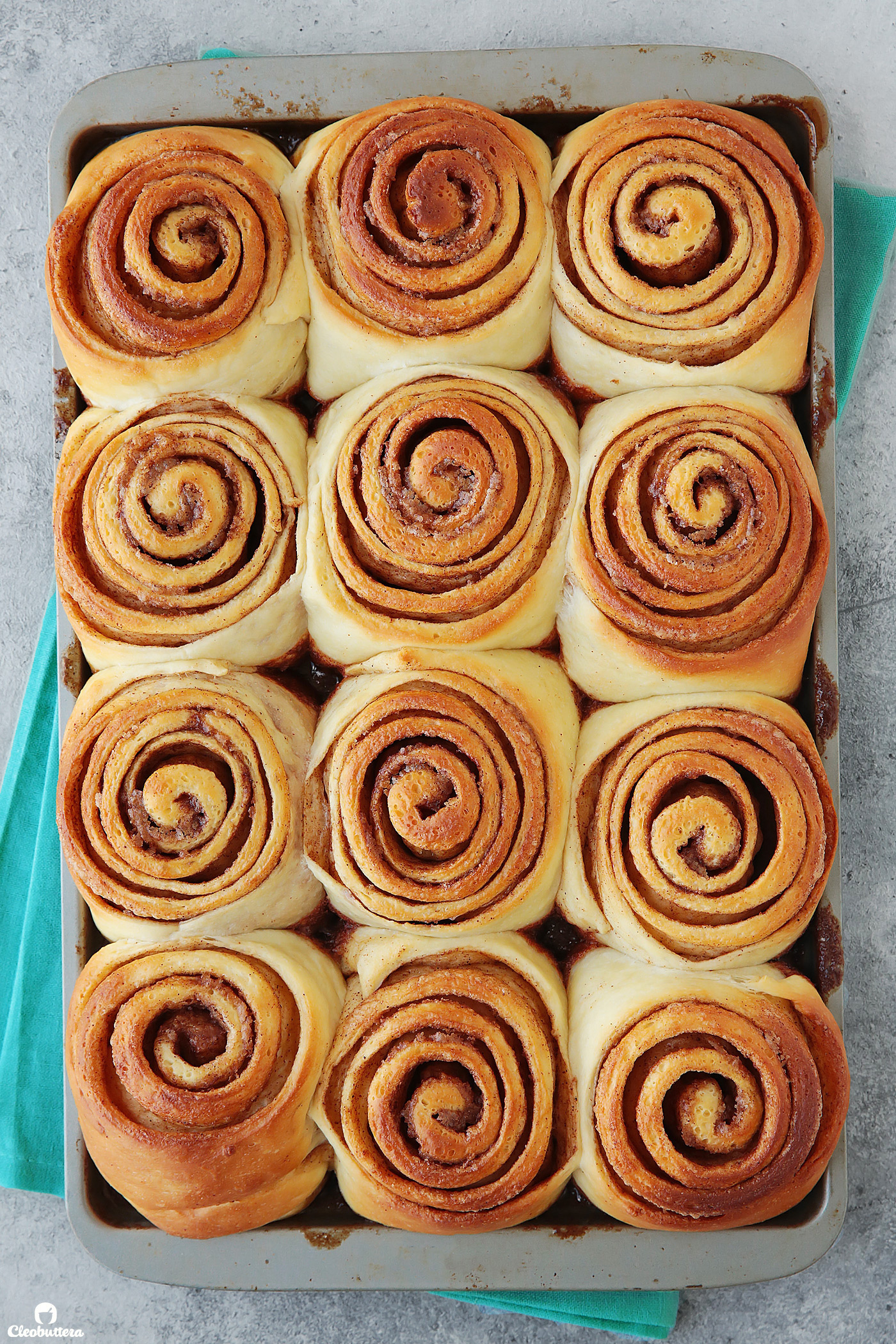
While they’ve still piping hot…slather on that cream cheese frosting…
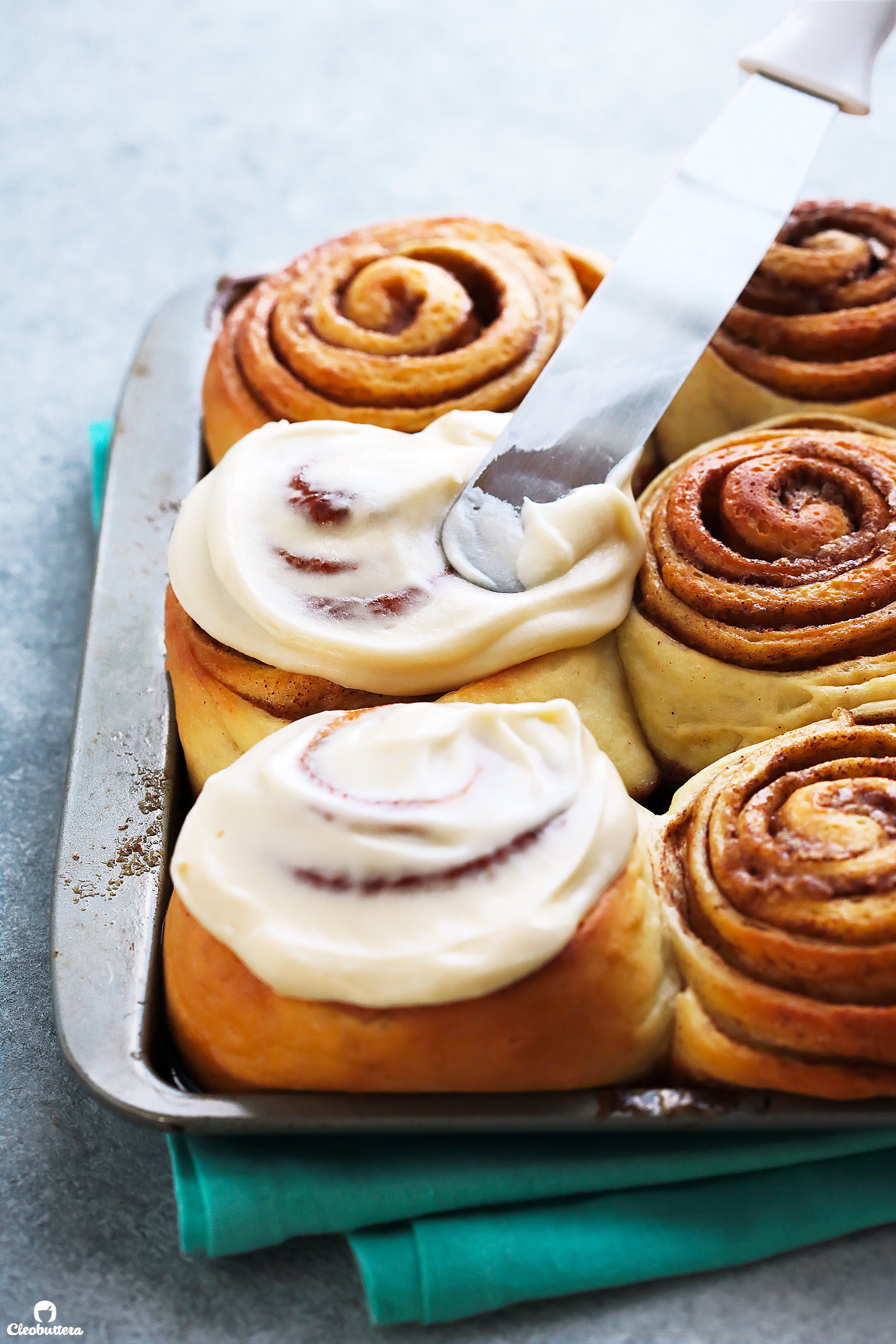
Unravel that heavenliness…
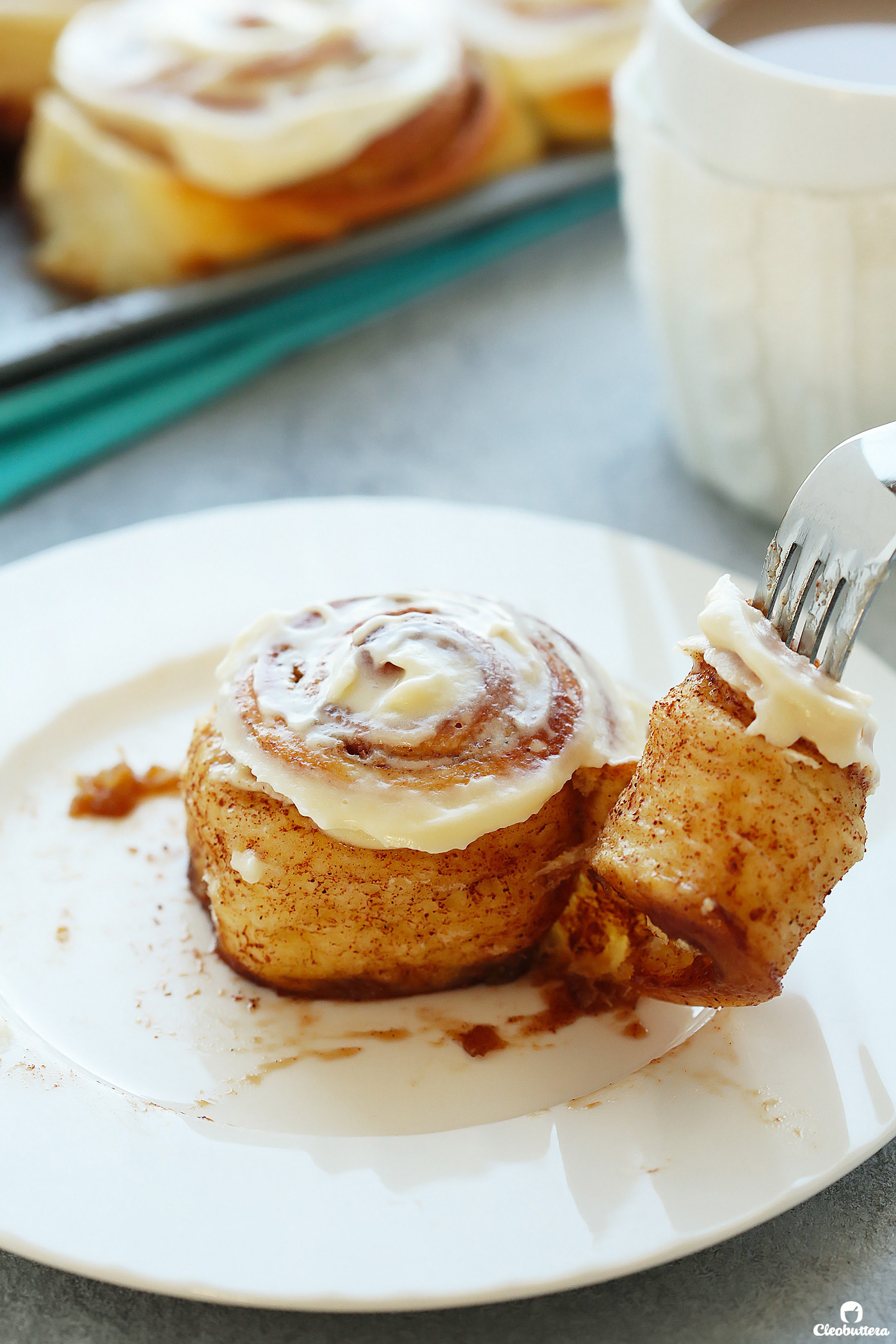
Take a bite, then marvel at that gooey, sticky, golden bottom. It’s like getting a cinnamon roll and sticky bun in one!
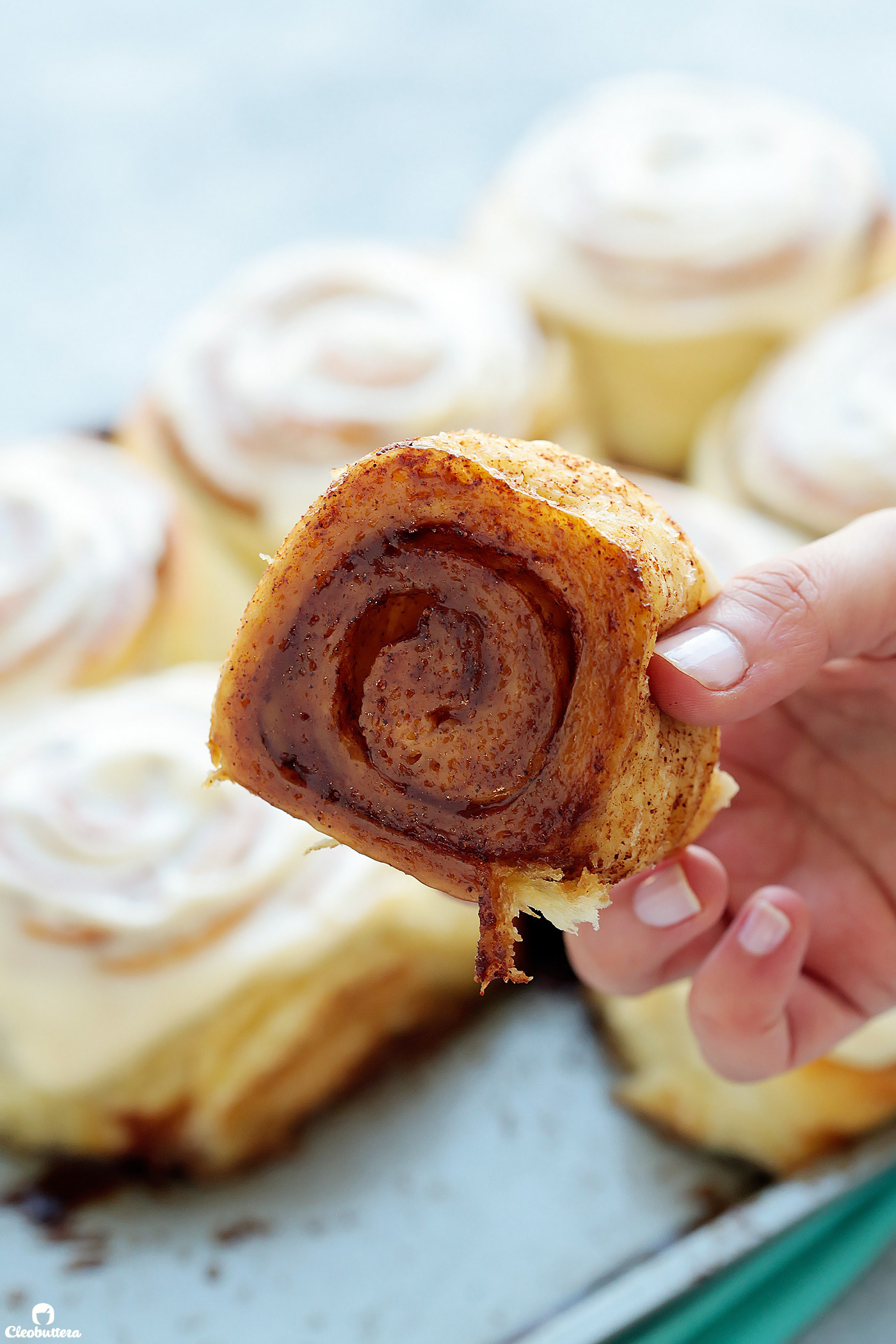
Tips for making super soft and fluffy cinnamon rolls:
- Weigh your ingredients. Using a kitchen scale for this recipe in particular (and baking in general) is highly recommended over measuring by cups. It will take the guess work out of the recipe because a gram will always be a gram, but a cup won’t always measure out to be the same. This is one recipe that weighing will make a difference. I even weigh out the liquid ingredients here.
- Don’t be tempted to add more flour. This dough is much softer than most bread/roll doughs. It starts out extremely sticky but will come together as mixing progresses. If you’ve weighed your ingredients, you’ll likely not need to add extra flour. If you’re using measuring cups, then wait until after the 10 minutes of kneading is over before deciding to add more flour. You still want it slightly sticky though, so add with care. Note that adding extra flour than what is called for in the recipe, may cause the dough to bake into drier, denser cinnamon rolls.
- Work with a cold dough. This is completely optional, but helpful. Making the dough a day in advance and letting it rise slowly (aka cold rise) in the fridge, makes the dough infinitely easier to roll into a neat cylinder and slice neatly. It also divides the work over 2 days, so there’s much less to do on the day you’re serving them
- Use the right pan size. Either a 15X13-inch rimmed baking sheet or 13X9-inch baking pan works perfectly for this recipe. Because the 15X13-inch baking sheet (as shown in the pictures) is bigger, it will yield slightly wider rolls with more browning around the edges. Whereas a 13X9-inch baking pan will yield taller but slimmer rolls that are softer around the edges.
- Create a warm environment for the rolls to rise. There are 2 bullet-proof ways to help yeast doughs rise in a reasonable amount of time. 1) Adjust oven rack to middle position and place a loaf or cake pan in the bottom of the (turned off) oven. Place the bowl of dough on the middle rack and pour boiling water into the pan. Close the oven door and allow the warm steam to help rise the dough. 2) Alternatively a warm, turned off oven may be used instead, just be sure that it’s not hot, as that could kill the yeast. It should feel like a warm summer day.
- Use an instant read-thermometer to check for doneness. Knowing if dough is baked through is trickier than cake, a foolproof way to know when dough is done, is by taking it’s internal temperature. A thermometer inserted in the center of the roll should measure between 190F-200F (88C-93C). Overbaking is known to dry out doughs, while under-baking can result in a raw center. If you don’t have an instant read thermometer, a toothpick inserted in the center of the roll, should go in and out smoothly, meet no resistance and come out clean.
- Tent the rolls with foil. These rolls tend to brown fast! So lightly tent them with foil, half way through baking, to avoid overbrowning.
- Frost rolls while still warm. Frost as soon as the rolls emerge from the oven. The frosting will partially melt, seeping down into the nocks and crannies and between of the rolls.
FAQs:
How can I make these cinnamon rolls ahead of time?
You have 2 options: 1) Prepare the dough up until step 5, but don’t let it rise. Cover and place in the fridge to rise overnight (slow cold rise). On the next day, roll out, fill, shape, rise and bake the rolls. 2) Bake the rolls the night before, but do not frost them. Allow them to cool and then cover tightly with plastic wrap. On the next morning, remove the plastic wrap, tent the pan with foil, then reheat them in a 350F/180C for about 5 minutes until very warm. Spread with the frosting. Alternatively, warm individual servings in the microwave; tastes as good fresh.
Letting the filled, unbaked rolls rest in the fridge overnight is NOT recommended as the cinnamon filling tends to liquify and leak out of the buns yielding soggy rolls.
Can I freeze the shaped and filled rolls?
“Freezing the unbaked rolls may result in a poor rise, and the filling is likely to leak out and pool in the bottom of the pan as the sugar melts. Instead, freeze the cinnamon rolls after they’re fully cooled, without any icing. Wrap tightly in plastic wrap and freeze for up to one month.” -King Arthur Flour
Can I use active yeast instead of instant?
Yes! Instant yeast can be used interchangeably with active dry yeast but you’ll need to proof it first. Stir 1 tablespoon of active dry yeast with the 3/4 cup of the milk from the recipe (warm it up though) and 1 teaspoon from the sugar amount. Let rest until it foams up, about 10 minutes, then proceed with the recipe by adding it to the dry ingredients along the butter and eggs.
Can I skip the powdered milk?
I have not tried omitting the powdered milk from this particular recipe, so I can’t tell for certainty what the outcome will be. However, I have tried a different tangzhong-based cinnamon roll dough that doesn’t call for powdered milk and noticed a downgrade. The purpose of powdered milk is to add another dimension of flavor as well as tenderize the dough. It’s not going to make a significant difference if you leave it out, but for bonkers awesome rolls, try to keep in if you can.
Can I make these gluten free?
I’m so sorry, but gluten-free baking is not my area of expertise, so my guess is as good as yours. If you do experiment with a gluten free flour, we’d love to know how it turns out, so others with the same dietary restrictions can benefit from your experience.
My rolls turned out denser and drier than expected…what have I done wrong?
The 3 main reasons that may cause the rolls to come out dry and/or dense, is adding too much flour, over-baking or under-proofing the dough. So be sure to weigh your ingredients using a kitchen scale for bullet-proof results, use an instant-read thermometer to check for doneness, be sure to check the expiry date of your yeast and make sure the dough is doubled in size in both rises before proceeding.
What if I don’t have a kitchen scale?
The most important ingredient to measure correctly is the flour. So be sure to lightly spoon the flour into your measuring cup, then sweep off excess using the back of a knife. You might feel the need to adjust the amount of flour after the 10 minutes of baking.
Can I knead the dough by hand?
Yes! But be ready for an arm workout ?? I’d suggest starting out by mixing the dough in a large bowl using a wooden spoon, and then when it starts coming together and feeling less sticky, use oiled your hands to knead until smooth and elastic.
Do these taste like Cinnabon?
I haven’t had Cinnabon in such a long time, so my reference of comparison is blurred, but I’ve been told that they’re better ?
Why are your posts so darn long?
Admit it! You so want to ask that ? Send help! I swear every time I promise myself to keep it short and sweet, it ends being longer and longer. I wish I can make my posts shorter, but I also wanna cram in as much information as I can to help you understand the why’s and how’s behind every recipe, especially more technical ones like this. I hope that my endless recipe rambling minimizes any room for error and helps you achieve the results you’re hoping for.
Would you like to see me make these rolls LIVE?
Head to my Instagram and watch my mini tutorial on my highlights labeled ‘Cinnamon Rolls’!
The Ultimate Cinnamon Rolls
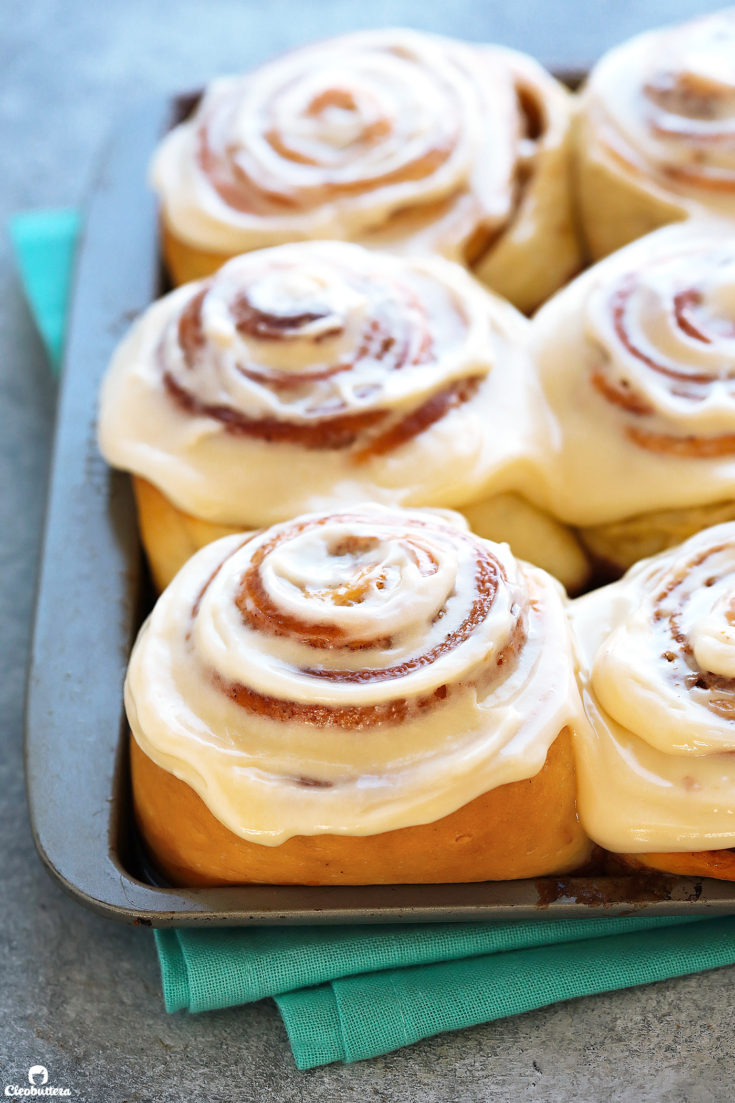
An amazing recipe for squishy soft cinnamon rolls with a super fluffy and tender texture and a gooey filling that caramelizes in the bottom. A halo of perfectly sweet cream cheese frosting ties everything. A brilliant Asian technique called Tangzhong, ensures moist, airy rolls that stay soft for days.
Ingredients
For the Tangzhong (flour paste):
- 5 tablespoons (71g) water
- 5 tablespoons (71g) whole milk
- 3 tablespoons + 1 teaspoon (28g) flour*
For the Dough:
- all of the tangzhong (above)
- 6 tablespoons (85g) unsalted butter, melted
- 3/4 cup (170g) whole milk, cold or cool room temperature
- 2 large eggs
- 4 cups + 2 tablespoons (496g) flour*
- 3 tablespoons plus 1 teaspoon (21g) powdered milk (dry milk powder)
- 1 tablespoon (9g) instant yeast
- 1/4 cup (50g) granulated sugar
- 1 3/4 teaspoons salt
For the Filling:
- 1/2 cup (114g) unsalted butter, very soft; partially melted
- 1 1/4 cups (250g) soft light brown sugar, packed
- 2 tablespoons (14g) cornstarch
- 2 1/2 tablespoons (13g) ground cinnamon
- 1/2 teaspoon fine salt
For the Frosting:
- 1/4 cup (57g) unsalted butter, softened to room temperature
- 2 oz (57g) cream cheese, softened to room temperature
- 1 cup (114g) powdered sugar
- 1 tablespoon milk
- 1 teaspoon fresh lemon juice
- 1/2 teaspoon vanilla extract (or 1 teaspoon imitation vanilla flavoring)
- Pinch of salt
Instructions
To make the Tangzhong (flour paste):
- Combine the tangzhong ingredients; the water, milk and flour in a medium saucepan, and whisk together until no lumps remain.
- Place the saucepan over medium heat, and cook, whisking constantly, until the mixture thickens to a smooth, pudding-like consistency; 2 to 3 minutes. Remove saucepan from heat.
To make the Dough:
- To the saucepan with the tangzhong (flour paste), whisk in the melted butter and milk until very smooth. Add in the eggs and whisk until fully incorporated. The liquid ingredients will cool off the hot tangzhong and the mixture should now feel lukewarm.
- In the bowl of a stand mixer (or a large bowl if kneading by hand) whisk together the flour, powdered milk, and yeast to combine. Pour in the flour paste/milk mixture.
- Fit the stand mixer with the dough hook and mix on low speed until all the flour is moistened and a shaggy dough comes together; 1 to 2 minutes. Let the dough rest, covered, for 20 minutes; this will give the flour a chance to absorb the liquid, making it easier to knead.
- After the 20 minutes, add the sugar and salt and mix on medium-low speed until a smooth, elastic and slightly sticky dough forms; about 10 minutes. The dough will be very sticky when mixing begins, but resist the urge to add more flour; the dough will absorb the excess moisture and come together nicely as the mixing progresses. After the 10 minutes of kneading, the dough should feel slightly sticky but not messy and should easily come together in a taut ball when handled with lightly oiled hands.
- Using lightly oiled hands, shape the dough into a ball, and transfer to a lightly greased large bowl. Cover tightly with plastic wrap and allow to rise in a warm place, until almost doubled in volume, about 1 hour. Alternatively, you can let it rise slowly in the fridge overnight; my personal favorite method, as a cold dough is so much easier to work with. Meanwhile, prepare the filling.
To make the Filling:
- In a medium bowl, whisk together the brown sugar, cornstarch, cinnamon and salt until well combined, Cover with plastic wrap and set aside until ready to use.
To make the Rolls:
- Gently deflate the risen dough, then turn out onto a pastry mat or very lightly floured counter. Pat, stretch and roll out the dough to form 16X18-inch rectangle with long edge nearest you.
- Evenly spread the partially melted butter all over the surface of the dough, then sprinkle the brown sugar filling over the butter, leaving 1-inch border along top edge; smooth the filling into an even layer with your hand, then gently press mixture into dough to adhere.
- Starting with long edge nearest you, roll the dough into a cylinder. Pinch the seam to seal the dough shut and roll cylinder seam side down. Mark gently with a knife to create 12 equal portions. For the cleanest cut, slice by holding a strand of dental floss underneath the cylinder, and cross ends of the floss over each other and pull. Slice cylinder into 12 portions (about 2 inches each) and transfer to a 15X13-inch rimmed baking sheet or 13X9-inch baking pan, that's been greased with cooking spray.
- Cover the pan loosely with plastic wrap and allow the rolls to rise until puffy and the rolls are touching one another; 40 to 50 minutes . In the last 15 minutes of rising, adjust oven rack to medium position and preheat the oven to 350°F/180°C. Meanwhile, prepare the frosting.
To make the Frosting:
- In a medium bowl (or food processor), using an electric mixer, beat together the butter and cream cheese until very smooth and creamy; about 2 minutes.
- With the mixer running, gradually add in the powdered sugar. Continue beating, until the sugar is fully incorporated and the mixture is light and fluffy; about 2 more minutes.
- Add in the milk, lemon juice, vanilla and salt, and beat until well combined. Cover until needed.
To bake the Rolls:
- Remove the plastic wrap from over the risen rolls and bake in the preheated oven for 20 to 25 minutes, tenting with aluminum foil halfway through baking to avoid over browning. The rolls are done when the center of the dough registers around 190F on an instant read thermometer, or when a toothpick inserted in the center of the roll, should go in and out smoothly, meet no resistance and come out clean..
- Remove the rolls from the oven, and immediately spread the tops with the frosting; it'll partially melt into the rolls. Serve warm. Store completely cooled rolls in an airtight container for a couple of days at room temperature.
Recipe Notes
- For a dough that produces soft, light and fluffy rolls, it is strongly recommended that you measure ingredients, especially the flour, by weight using a kitchen scale, rather than measuring cups. If you don't have a kitchen scale to weigh the flour, use the Spoon & Sweep method: Use a spoon to lightly fill measuring cup with flour until required amount is obtained, then sweep access with the back of a knife. You might need to adjust the amount of flour after the 10 minutes of kneading.
- King Arthur Flour, the source of the dough's recipe, calls for bread flour here. Bread flour is not available where I live, so I use all-purpose flour instead with great results. However, please note that the all-purpose flour in my country is high in protein, which makes it similar to bread flour. Using low-protein all-purpose flour will not guarantee perfect results, so stick to bread flour if it's available to you.
- To create a warm environment for the dough to rise, adjust oven rack to middle position and place a loaf or cake pan in the bottom of the oven. Place the bowl of dough on the middle rack and pour boiling water into the pan. Close the oven door and allow the dough to rise as instructed. Alternatively, a warm, turned off oven may be used instead, just be sure that it's not hot, as that could kill the yeast. It should feel like a warm summer day.
- Make ahead tip! To make the rolls in advance you can either 1) Prepare the dough up until step 5, but don’t let it rise. Cover and place in the fridge to rise overnight (slow cold rise). On the next day, roll out, fill, shape, rise and bake the rolls. 2) Bake the rolls the night before, but do not frost them. Allow them to cool and then cover tightly with plastic wrap. On the next morning, remove the plastic wrap, tent the pan with foil, then reheat them in a 350F/180C for about 5 minutes until very warm. Spread with the frosting. Alternatively, warm individual servings in the microwave; tastes as good fresh. Letting the filled rolls rest in the fridge overnight is NOT recommended as the cinnamon filling tends to liquify and leak out of the buns yielding soggy rolls.
- Be sure to read through the tips and FAQs in the post before proceeding with the recipe.
Dough recipe adapted from King Arthur Flour with changes, and these Ultra Fluffy Milk Bread Rolls.
Filling and frosting adapted from Lauren's Latest with changes.
Measurements Note: All recipes of this site have been developed using weight measurements. Although US volume measurements have been included for your convenience, it is highly encouraged that you weigh your ingredients using a kitchen scale to get the best possible results. Due to the sensitive nature of baking, kitchen scales are proven to yield more accurate and consistent results than measuring cups. Enjoy!
This post may contain affiliate links.
All images and content are owned by Cleobuttera® and are copyright protected. Please do not use my images without prior permission. If you would like to republish a recipe, please rewrite it in your own words and link back to the recipe page on my site. Original recipes and creations of this site are intended for personal and home use. Commercial replication or media consumption are only allowed with a written consent and agreement with Cleobuttera owners. Otherwise it is considered a violation of intellectual property. Thank you for respecting and appreciating the amount of time and effort that goes into creating free, unique recipes that make people happy.
